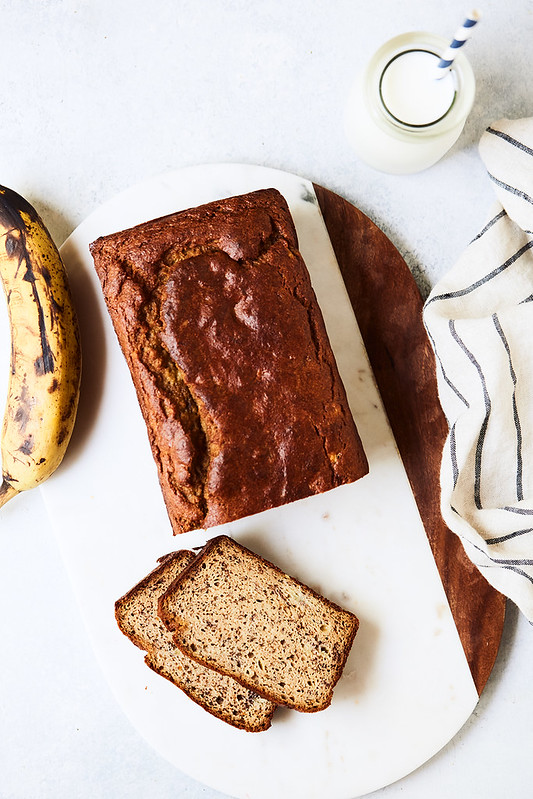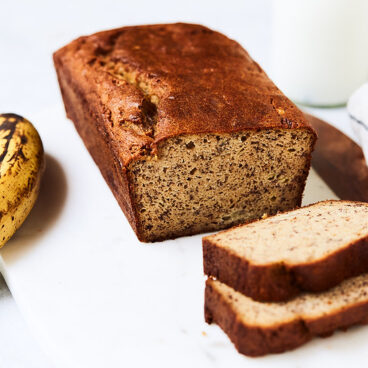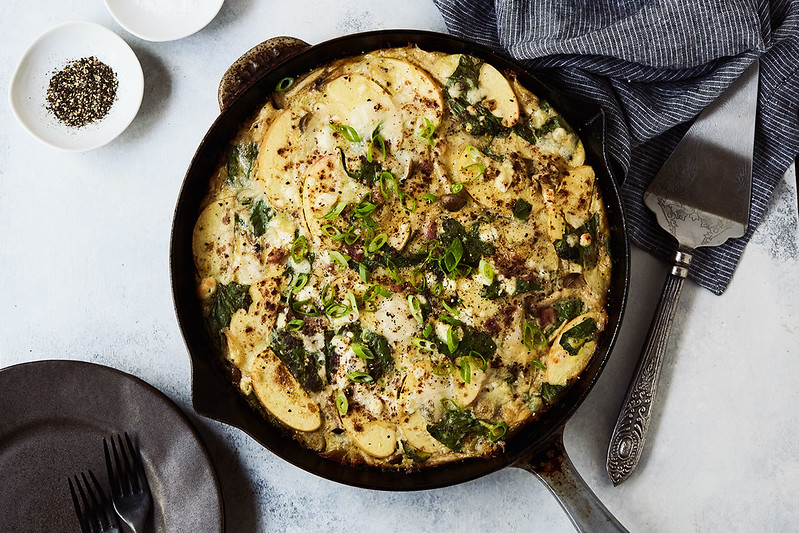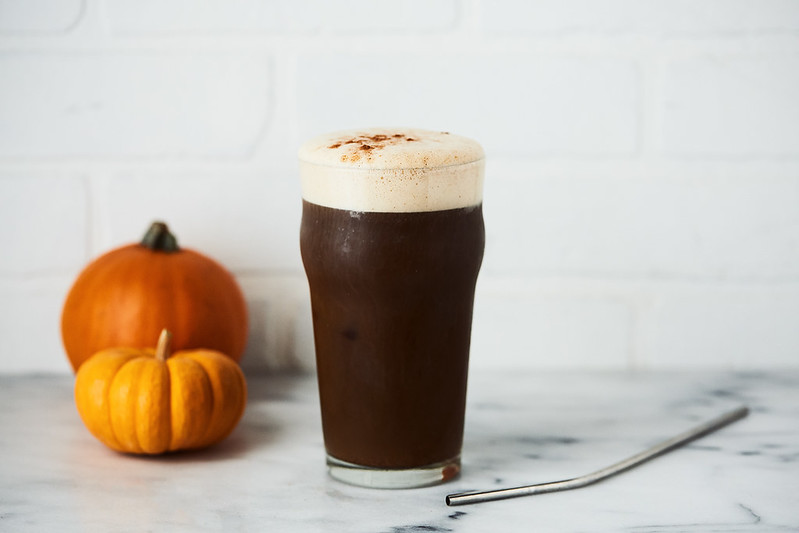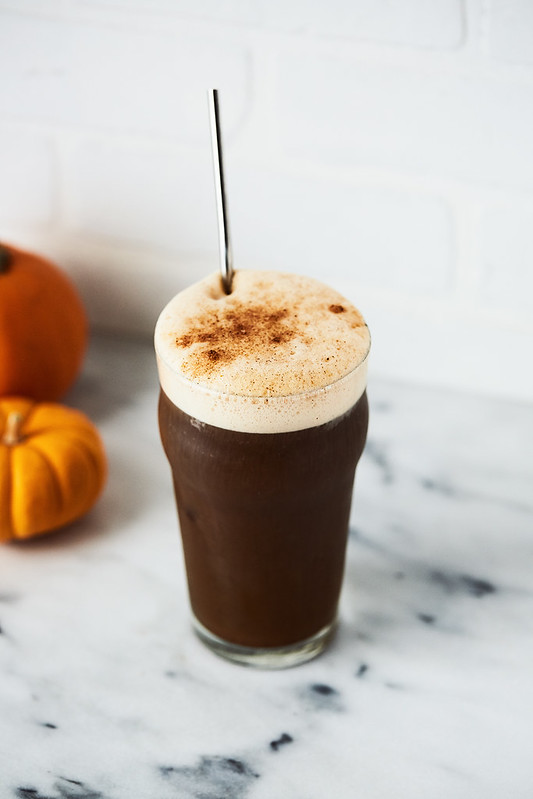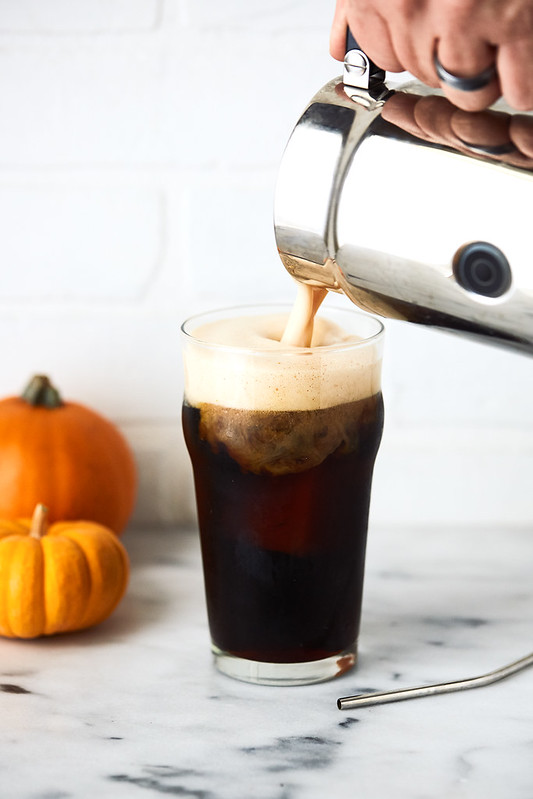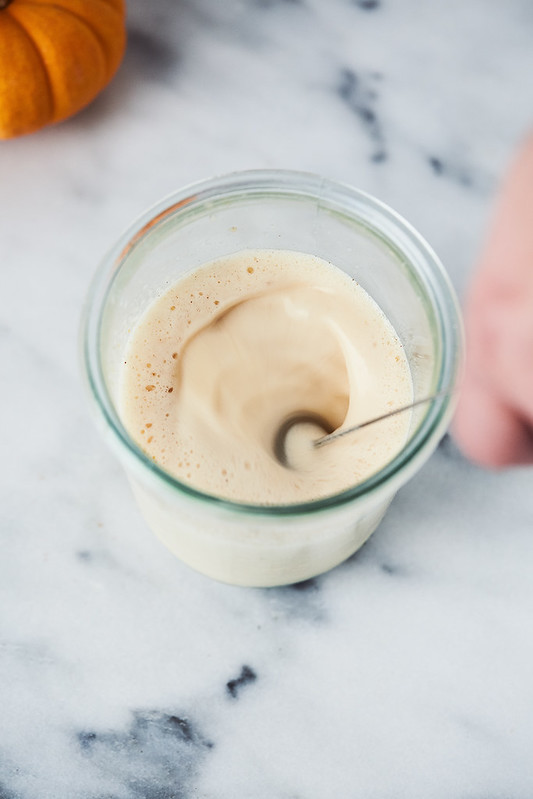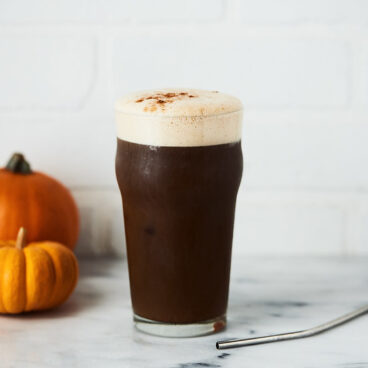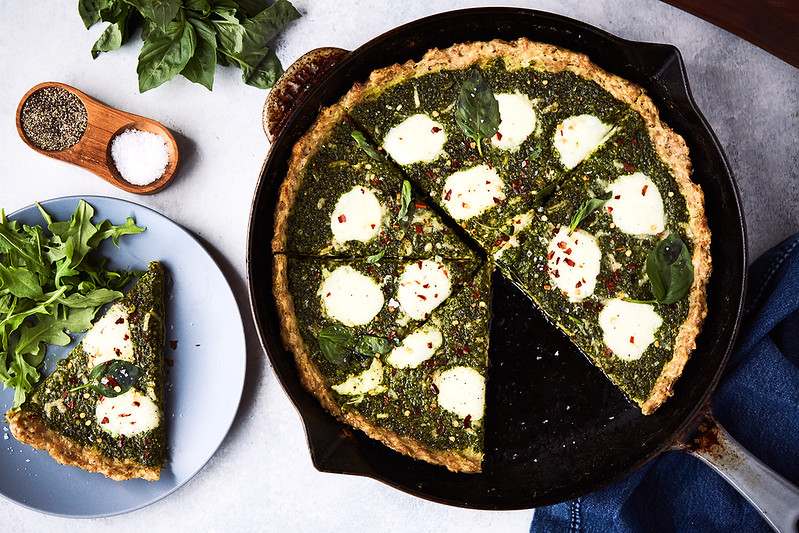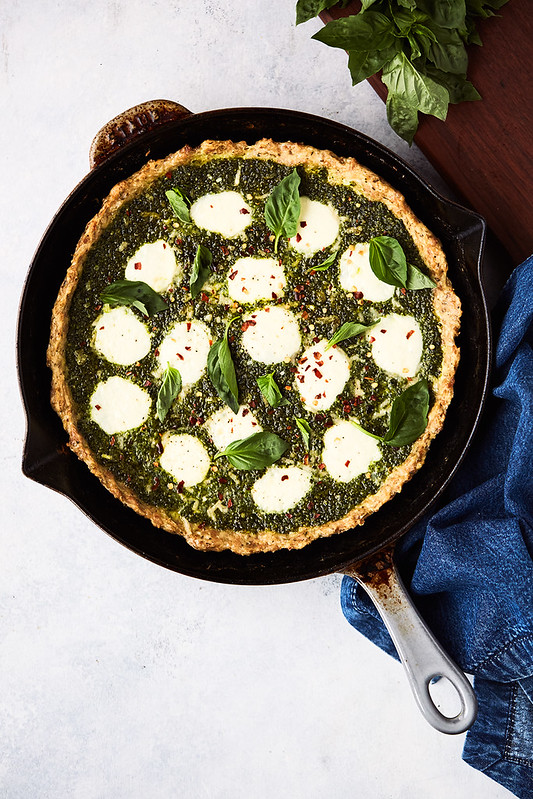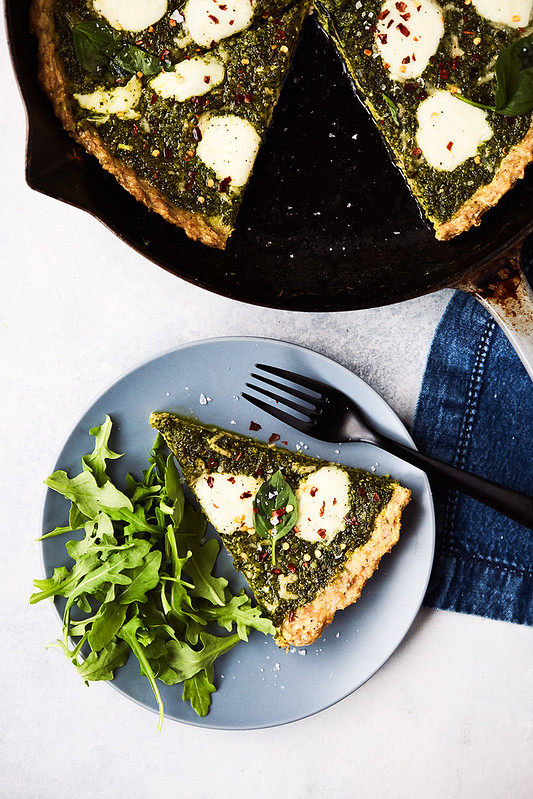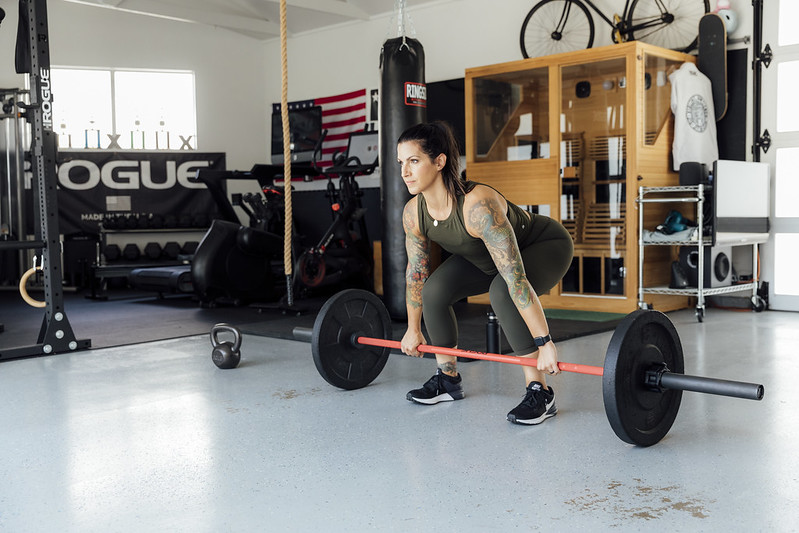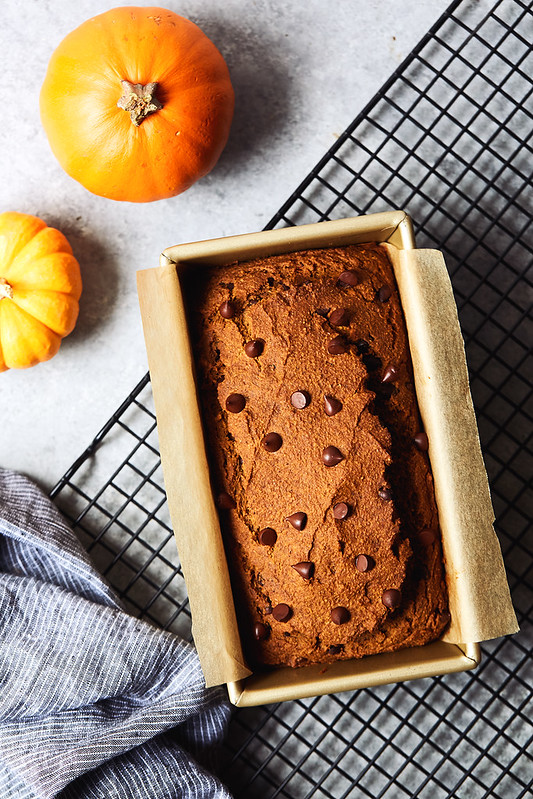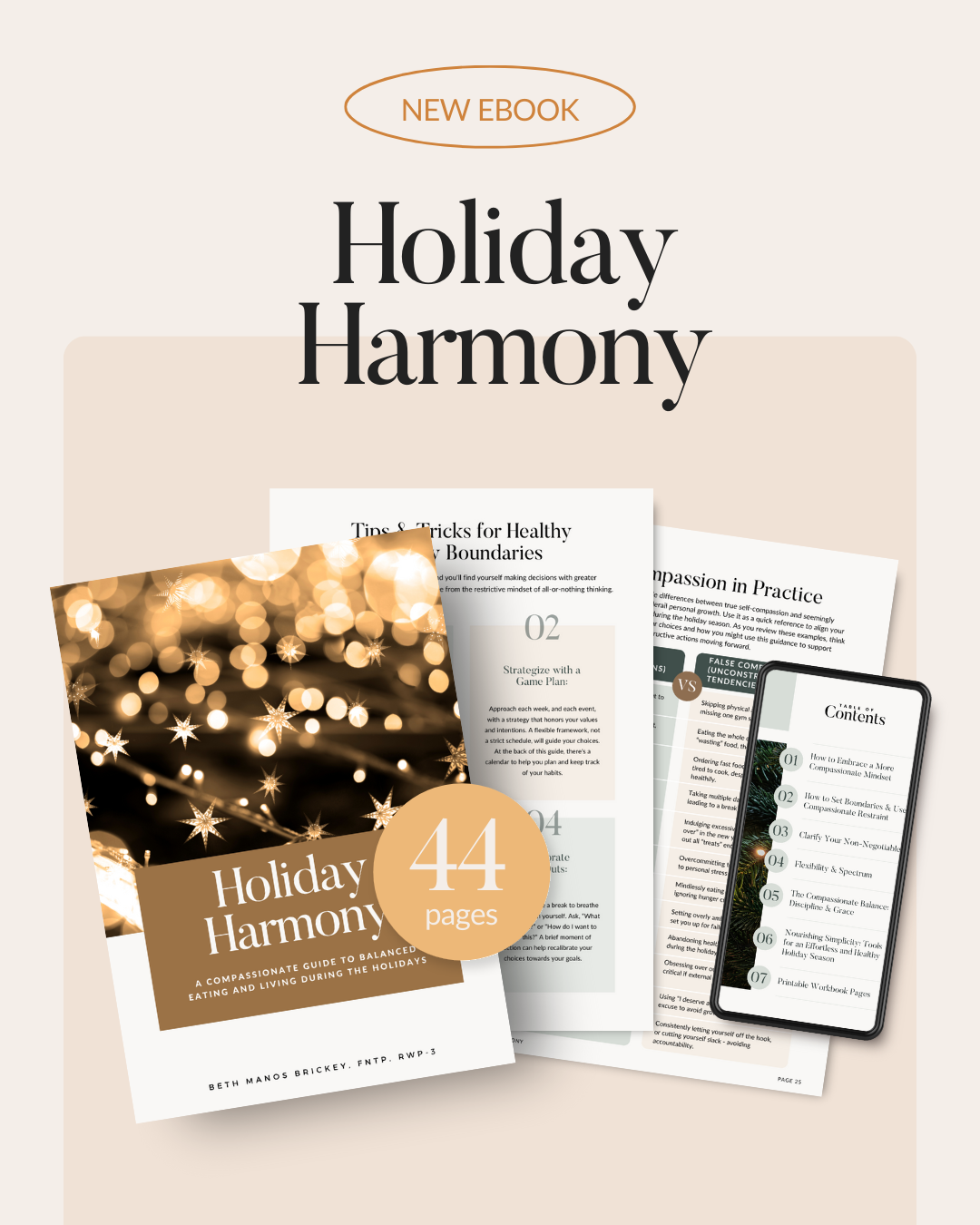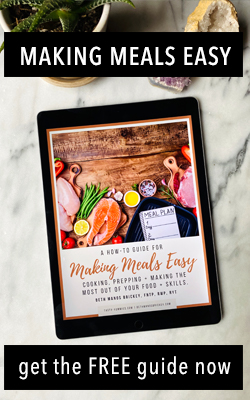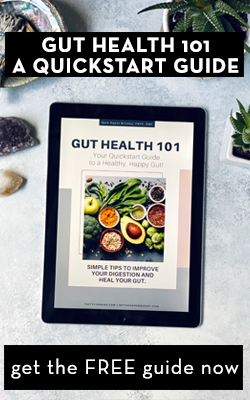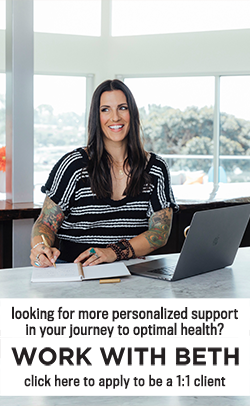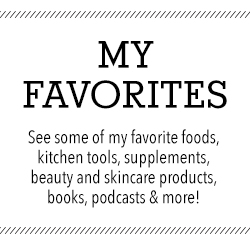-
Between Meals Podcast. Episode 44: Healing Chronic Skin Conditions and Uncovering Common Root Causes
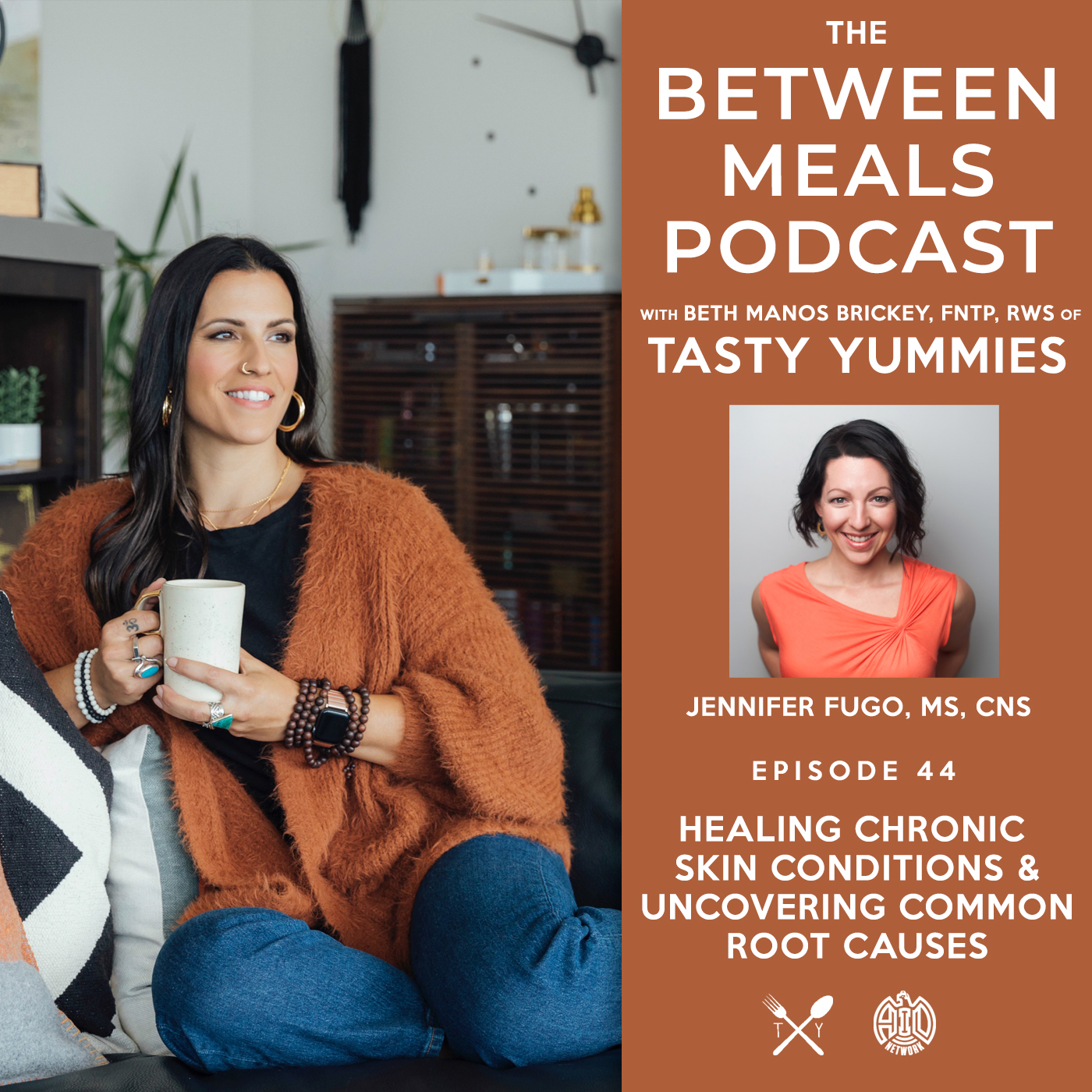
LISTEN NOW ON ITUNES
(Listen on iTunes)
No. 44 | Healing Chronic Skin Conditions and Uncovering Common Root Causes
with Jennifer Fugo, MS, CNS
On this episode on the Between Meals podcast we are joined by skin health and gut health expert Jennifer Fugo. We are talking all about the health of your skin, managing chronic skin rashes, discover missing pieces that could be contributing and moving beyond conventional medicine to get relief.
In this episode we cover:
- Jennifer’s journey with chronic eczema and what she learned along the way
- Why Jen developed a platform and podcast to talk about skin health
- Digging into root causes
- Why what works for one person won’t necessarily work for you
- What are the 16 most common root causes for chronic skin rash conditions
- What to do when you feel overwhelmed by the possible causes of your skin issues
- How gut health affects your skin
- What is leaky skin?
- Taking a deeper look at digestion
- Hidden infections and pathogens
- When lab work can be helpful
- There are some issues that are not “food fixable”
- Food can be medicine, but it’s not the only medicine
- You probably have not tried everything
- How can you support your own body, where it is right now with what it needs?
- How can you look outside of your skin at other symptoms can be related?
- Feeling empowered by finding your answers
- 4 things you can ADD IN to support healthier skin
Resources Mentioned in this Episode:
Where to Find Jennifer Fugo, MS, CNS:
LISTEN NOW ON ITUNES
(Listen on iTunes)
You can now subscribe to the Between Meals Podcast on Apple iTunes, Google Play, Spotify and Stitcher
THANK YOU FOR LISTENING:
Since we are still pretty new on iTunes, please do us a solid and SUBSCRIBE and of course, we would be honored if you took the time to rate and review the show, this will help more people find us and help the show to grow! If you liked this episode or others, please share on social media and tag us, share with friends and family, etc – this means the world!
-
Between Meals Podcast. Episode 43: TOUGH LOVE: You’re Not So Special That You Get to Skip the Work!!!
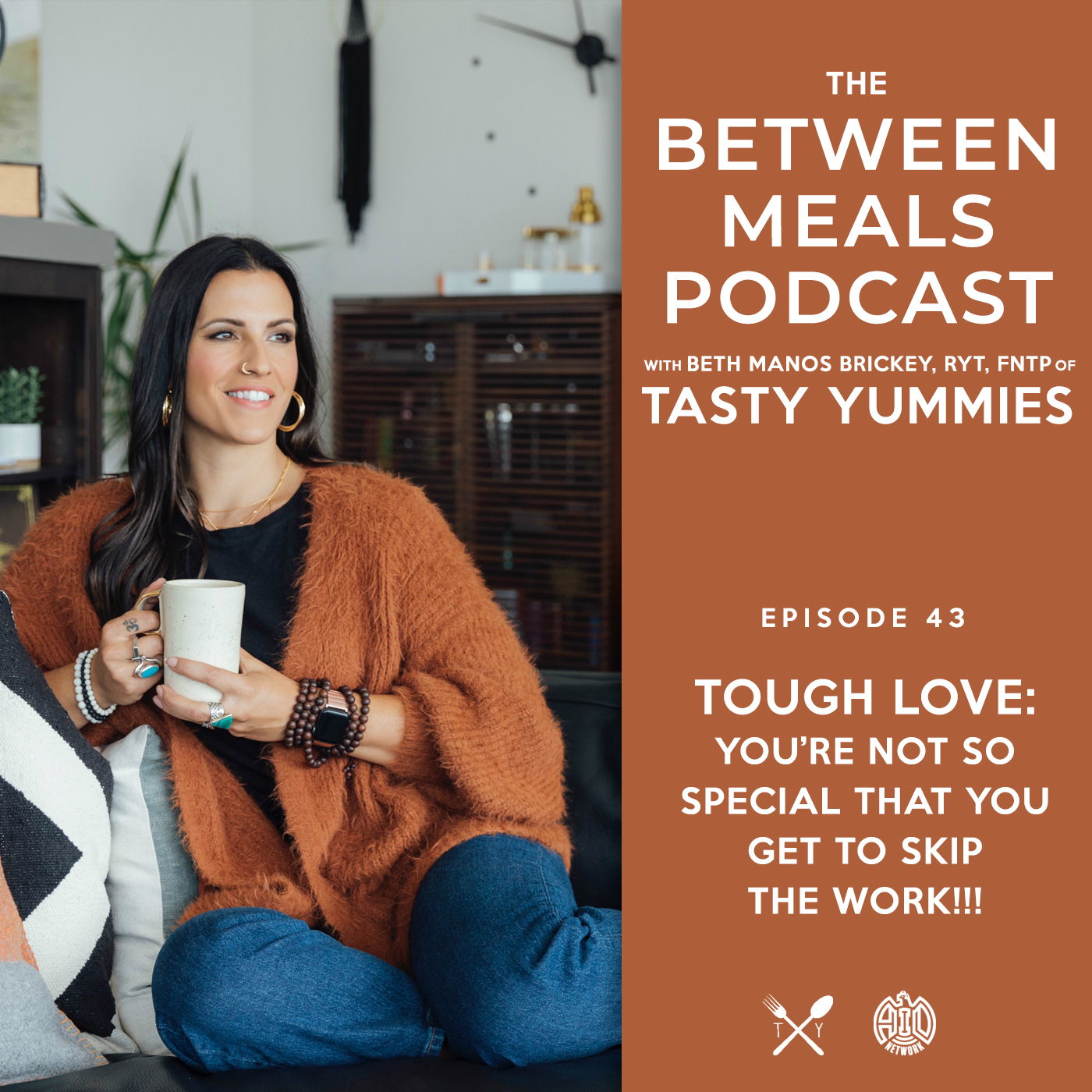
LISTEN NOW ON ITUNES
(Listen on iTunes)
No. 43 | TOUGH LOVE: You’re Not So Special That You Get to Skip the Work!!!
PLEASE PLEASE PLEASE I URGE YOU TO LISTEN TO THIS EPISODE.
This is a short but sweet episode that comes with a little bit of saltiness, too!! Don’t worry the tough love comes with a lot of compassion and personal experience.
BIG TAKEAWAY: STOP COMPARING YOUR DAY 5 TO THEIR YEAR 5.
Quit the comparison game and realize that you aren’t so special that you don’t get to skip the work and jump straight to the finish line! It’s insulting to assume you “should” be where “they” are if you haven’t put in the time.
LISTEN NOW ON ITUNES
(Listen on iTunes)
You can now subscribe to the Between Meals Podcast on Apple iTunes, Google Play, Spotify and Stitcher
THANK YOU FOR LISTENING:
Since we are still pretty new on iTunes, please do us a solid and SUBSCRIBE and of course, we would be honored if you took the time to rate and review the show, this will help more people find us and help the show to grow! If you liked this episode or others, please share on social media and tag us, share with friends and family, etc – this means the world!
-
Between Meals Podcast. Episode 42: Gut Healing 101 and Why I am Healing My Gut… AGAIN!
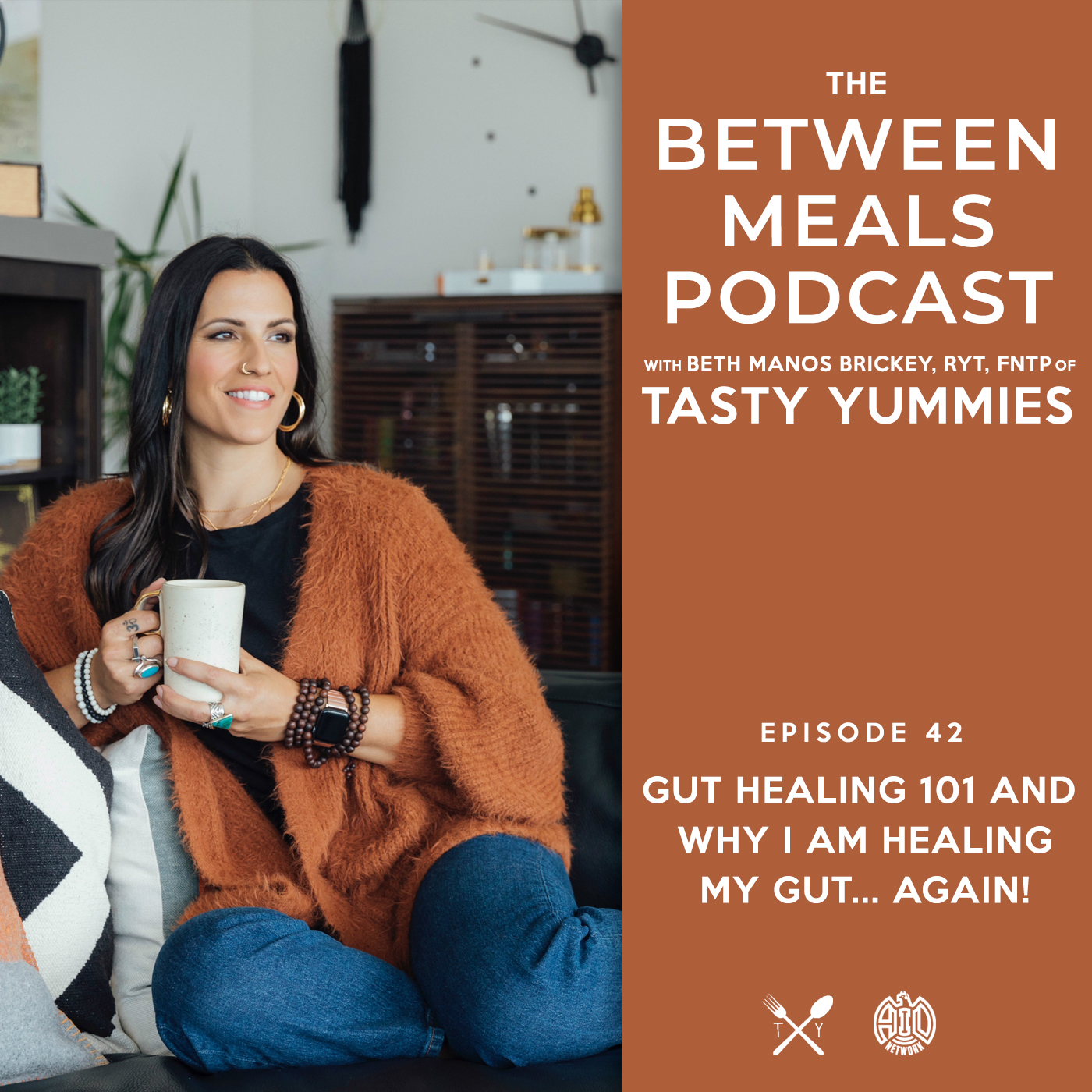
LISTEN NOW ON ITUNES
(Listen on iTunes)
No. 42 | Gut Healing 101 and Why I am Healing My Gut… AGAIN!
In this episode we go back to basics with gut healing and gut health, plus I am sharing why I am back to healing my gut… again, including the testing I use and recommend and my foundational tips for getting started.
In this episode we discuss:
- Why Gut Health Matters SO MUCH!
- Why I am Healing My Gut… AGAIN.
- Signs and Symptoms You May Need to Heal Your Gut
- What Causes Gut Issues?
- Getting Started With Gut Healing
- The 4 Rs of Gut Healing
- What You Can Do When Elimination Diets Aren’t Working
- Functional Tests I Use in My Practice to Get to Root Cause Issues
- What Can You Do After a Round of Antibiotics?
- Tips for Fat Digestion
- Recommendations for Gastroparesis
- Is There a Holistic Plan for Coming Off PPIs?
- Why Am I Still Getting Heartburn if I am Supplementing with HCL?
- How to Know When Gut Healing Is Working?
- How Long Does Gut Healing Take?
Resources Mentioned in the Episode:
Gut Healing Articles in the TY Archives
5 Tips for Eating Mindfully and Why It Matters
Cooking Fats and Oils: Which to Include and Which to Avoid
4 Reasons to Avoid Vegetable and Seed Oils
LISTEN NOW ON ITUNES
(Listen on iTunes)
You can now subscribe to the Between Meals Podcast on Apple iTunes, Google Play, Spotify and Stitcher
THANK YOU FOR LISTENING:
Since we are still pretty new on iTunes, please do us a solid and SUBSCRIBE and of course, we would be honored if you took the time to rate and review the show, this will help more people find us and help the show to grow! If you liked this episode or others, please share on social media and tag us, share with friends and family, etc – this means the world!
-
The Basics of Blood Sugar
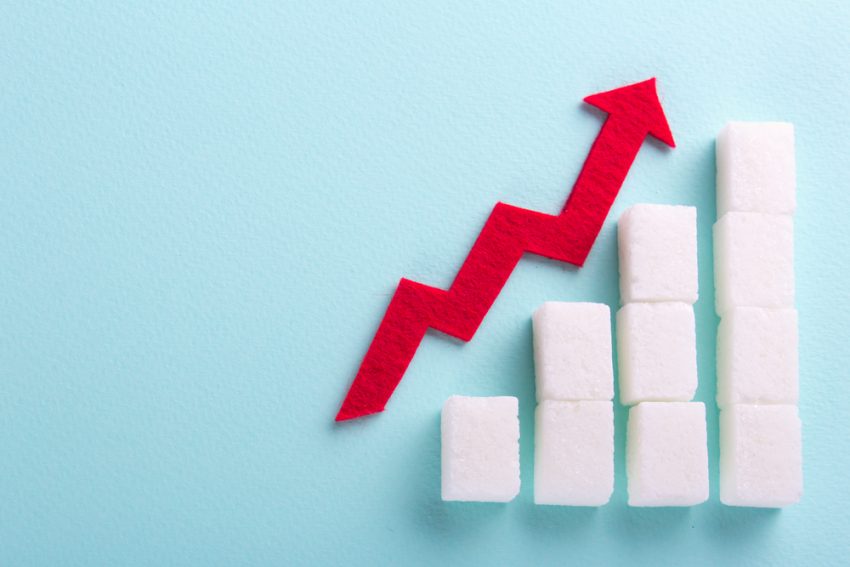
Are you concerned about your blood sugar? What is blood sugar and why does it matter so much?
It is possible, you have heard the term “blood sugar” before this article. Most people think of blood sugar and they think about the “blood sugar crash” we’ve all experienced before – feeling low energy, raging hungry and maybe even feeling shakey or experiencing those annoying tension headaches. What most people don’t realize is that this blood sugar low, it is almost always a result of a previous blood sugar high. The blood sugar spikes are what inevitably lead to those major crashes, but we are rarely talking about “blood sugar spikes” and what leads to them.
Before we get into the nitty gritty of blood sugar, it’s important to note that blood sugar isn’t just ‘a diabetes thing’ and it isn’t just an obesity thing. Every human, no matter their size, their age or their body type has blood sugar and any human can have blood sugar imbalances.
What is Blood Sugar / Blood Glucose?
Blood sugar, also known as blood glucose, is the amount of glucose present in your blood stream. Glucose in the bloodstream is affected most by the foods you eat. Your body creates glucose in the bloodstream by digesting these foods into a sugar that circulates in your bloodstream. Our body will then use that blood sugar for energy, then what isn’t currently needed for energy will get stored in the cells for later use.
Blood glucose levels are raised most significantly with carbohydrate foods, foods made from refined grains, breads, noodles and pastas, baked goods and pastries, sugar and sugary foods, but these carbohydrates also include grains in their whole state, starchy vegetables, fruits, etc. Yes, some of these carbohydrate foods can absolutely be a part of a healthy and well-balanced diet, it’s all about how much of these foods you eat at once and in what combination – this is what we need to be most aware of when it concerns blood sugar imbalances.
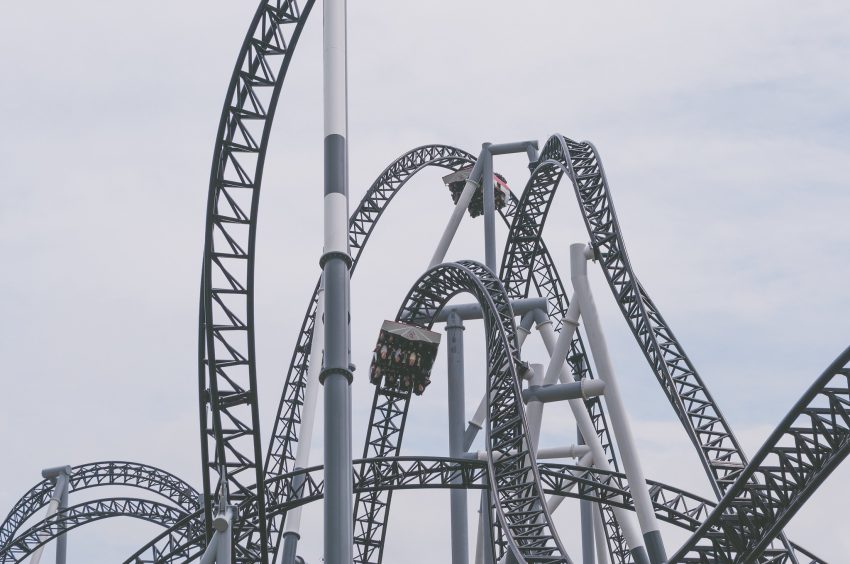
What Goes Up, Must Come Down
Where blood sugar (AKA blood glucose) is concerned, every single time you eat your blood sugar will rise, this is a natural, human response to food and energy production, how much so will depend on both the kind of food you are eating including the macronutrient profile of the food (which we will get to), as well as the quality and the quantity of that food and of course, the current health state of your body.
Unfortunately, thanks to the modern diet rich in simple carbohydrates (a diet common for many folks), the balanced, even blood sugar that our body has adapted to handle and manage with ease is far less common than not. A large influx of simple carbohydrates in a single meal, think pancakes with syrup at breakfast, a bagel, cereal, toast, a gigantic bowl of pasta for lunch, etc – this will lead to a swift rise in blood sugar levels. With a quick rise in blood sugar, our body sees this as an emergency that must be dealt with immediately.
How does the body deal with these blood sugar spikes? Let’s get into the basics of blood sugar regulation.
Blood Sugar Regulation
‣ When blood sugar rises this stimulates the pancreas to release insulin to help bring down blood sugar levels by storing away excess glucose as glycogen and triglycerides to be used later for energy.
‣ But insulin can overcorrect, causing blood glucose levels to drop too low (called reactive hypoglycemia), which the body also sees as an emergency.
‣ The central nervous system then signals the release of epinephrine and norepinephrine, followed by cortisol, to bring up blood sugar levels by converting glycogen and amino acids to glucose.Especially when we over-consume simple carbohydrates — which is very easy to do, for a variety of reasons including our genetic programming, the instant mood and energy boosts that we are often craving (thanks to stress, lack of sleep and blood sugar imbalances) and easy access to hyper-palatable processed foods — this same cycle can repeat over and over again throughout the day, eventually leading to blood sugar dysregulation, insulin resistance, possibly adrenal / HPA Axis issues (thanks to the excessive output of cortisol) and a myriad of symptoms associated with each of these.
The big players in the blood sugar system:
Most people don’t realize this, but the brain is the primary organ of blood sugar regulation, which in turn directs the activity of the following 5 primary peripheral organs and tissues via the:
- Pancreas
- Adrenals
- Adipose Tissue
- Liver
- Skeletal Muscle
AKA (the “PAALS”)
As well, the central nervous system works in tandem with these 5 primary hormones to help regulate blood sugar levels:
‣ Insulin – Insulin is produced by the beta cells of the pancreas and plays a very important role in regulating blood sugar levels. Insulin is essentially the key to unlock out cellular “gates” to let energy in, meaning the excess glucose found in the blood. The excess energy (glucose and fat) gets stored away in the cells of our liver, muscles, and fat tissue.
‣ Glucagon – Glucagon is produced by the alpha cells of the pancreas and it promotes the breakdown of glycogen to glucose in the liver. Glucagon balances insulin. When blood glucose levels drop sometime after eating this stimulates the release of glucagon for more energy. This cycle tells your cells to then release stored glycogen for energy to hold you over until your next meal. This cycle repeats itself throughout the day. Glucagon is essentially key that unlocks our cellular “gates” to let glucose and fat out of our cells.
‣ Epinephrine & Norepinephrine – Both epinephrine and norepinephrine are released when the body experiences a stress and it fears for it’s safety. Whether an external physical threat or internal, such as low blood sugar, these are part of the central nervous system’s fight or flee mechanism, designed to keep us safe. Epinephrine stimulates glycogenolysis in the liver, which converts glycogen to glucose, as well as lipolysis, which releases fatty acids from triglycerides stored in body fat and finally gluconeogenesis, which converts lactate, glycerol, and amino acids to glucose in the liver. All as a means to have the energy to fight or flee.
‣ Cortisol – Cortisol is a steroid hormone released when stress levels are high or blood sugar levels are too low. It increases the fuel (or energy) available to the heart and skeletal muscles in the same ways that epinephrine does, through stimulation of glycogenolysis, lipolysis and gluconeogenesis. However cortisol is slower to respond, taking minutes rather than seconds, since cortisol relies on the complex process of the HPA-Axis. (Another amazing topic for another day).
A really easy way to remember all of this: if blood sugar regulation were an orchestra, the central nervous system would be the conductor and the PAALS, the instruments.
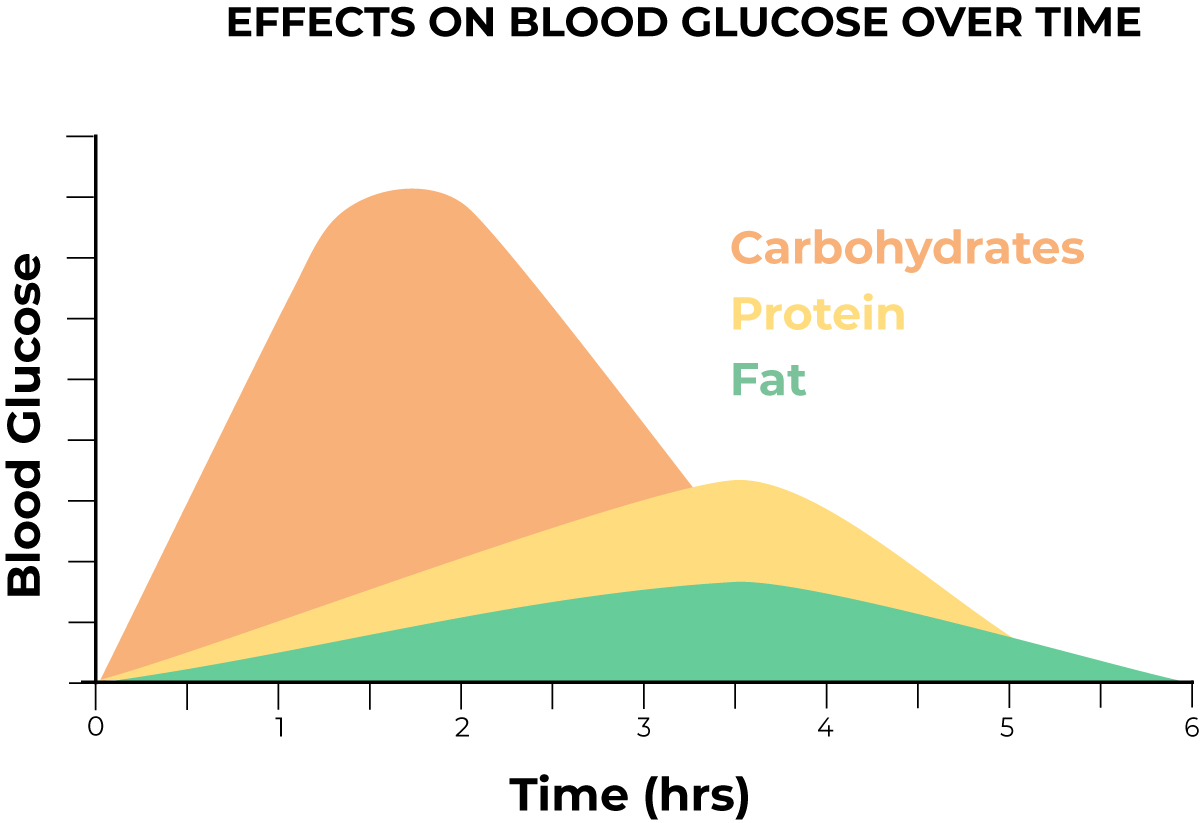
How the Food You Eat Affects Your Blood Sugar
Every single food we eat can be broken down into three macronutrient groups:
‣ Carbohydrates
‣ Protein
‣ Fat
Foods found in their whole food state are almost always dominant in one of these macronutrients over the others, but many foods contain a mixture. As mentioned previously, while all macronutrients will cause some increase in blood glucose levels, as you can see above carbohydrates will cause a larger increase than others, meaning the post meal crash that results will also be larger. Being aware of not only what types of foods you are consuming and how it affects your blood sugar is the first and easiest way to start balancing blood sugar levels and avoiding big spikes and huge crashes.
While you may be able to, at this point, do some simple reasoning and see how a meal of JUST carbs can cause an extreme blood sugar spike and crash, you may not still understand what foods fall under which categories, so let’s look at some other common foods.
Some examples of various foods and their dominant macronutrient group:
- Sweet potato: unrefined carbohydrate
- Boneless skinless chicken breast: protein
- Broccoli: unrefined carbohydrate
- Bacon: protein and fat
- Bowl of pasta: refined carbohydrate
- Apple: unrefined carbohydrate
- Eggs: protein and fat
- Steak: protein and some fat (more or less fat depending on the cut)
- Spinach: unrefined carbohydrate
- Whole Grain Rice: unrefined carbohydrate
- Avocado: fat and some carbohydrates
- Beans: unrefined carbohydrate and some plant-based protein
- Ice cream: refined carbohydrate and fat
In nature, carbohydrate-rich foods, in their whole food state almost always contain significant amounts of fiber. The fiber found in unrefined carbohydrates will actually slow down the effects on blood sugar as compared to a refined carbohydrate like a pastry, baked good, bread, pasta, juice, dessert, etc. which often have little in-tact fiber remaining. While fiber itself is a carbohydrate, it should not cause an increase in blood glucose or insulin as it is not digested by the small intestines and instead they make it to the large intestine where they are broken down by bacteria. In some cases fiber can actually decrease glucose and insulin levels. Fiber can been shown to improve insulin sensitivity, decrease heart disease risk and foster beneficial bacteria in our guts. Another benefits to fiber is that it “bulks up” and helps you to feel satiated and full.
In this same way when we combine our whole food carbohydrates with protein and fats, which we will get to in just a moment, the fiber found in whole food carbohydrates can provide an additional blunt to the blood sugar spike we would get from the carbohydrates alone. When we refine foods away from their whole food state, grains made into flour for baked goods, fruits that get juiced, sugar that is stripped of any nutrients, we are taking a direct hit of sugar to the blood and you know what comes next.
Added processed and refined fibers added to packaged and processed foods aren’t exactly the same as the in-tact fiber found in whole, unrefined foods as they are found in nature. Often these products advertised as low or no carb (because of the net carb approach) and they will often be loaded up with fibers, but it doesn’t mean these products are a good choice. Fibers added to processed foods like these may not cause the same response in the body that fiber found in whole foods will. Meaning it may still cause a glucose and insulin response and in some cases it may also cause some aggressive digestive issues. The FDA is currently investigating many of these “false fibers”.
PLEASE READ THIS AND THEN READ IT AGAIN:
Nutrient-dense, non-starchy vegetables like broccoli, spinach, cauliflower, kale, Brussels sprouts, cabbage, asparagus, mushrooms, peppers, zucchini, celery, cucumber, eggplant etc etc – these foods, while they are certainly more dominant in carbohydrates than protein or fat, they are so low in carbohydrates and so rich in fiber, vitamins, minerals and phytochemicals — that these should be consumed in unlimited abundance at every meal, without concern for blood sugar levels.
It’s also important to note that these main macronutrients are not the only foods / things that can cause a blood glucose spike. One randomized trial study showed that caffeinated coffee can impair the body’s ability to manage dietary glucose, resulting in higher blood sugar levels.1https://academic.oup.com/ajcn/article/87/5/1254/4650389 so it is important to always stay curious. In part two of this series we will be talking more about these other factors.
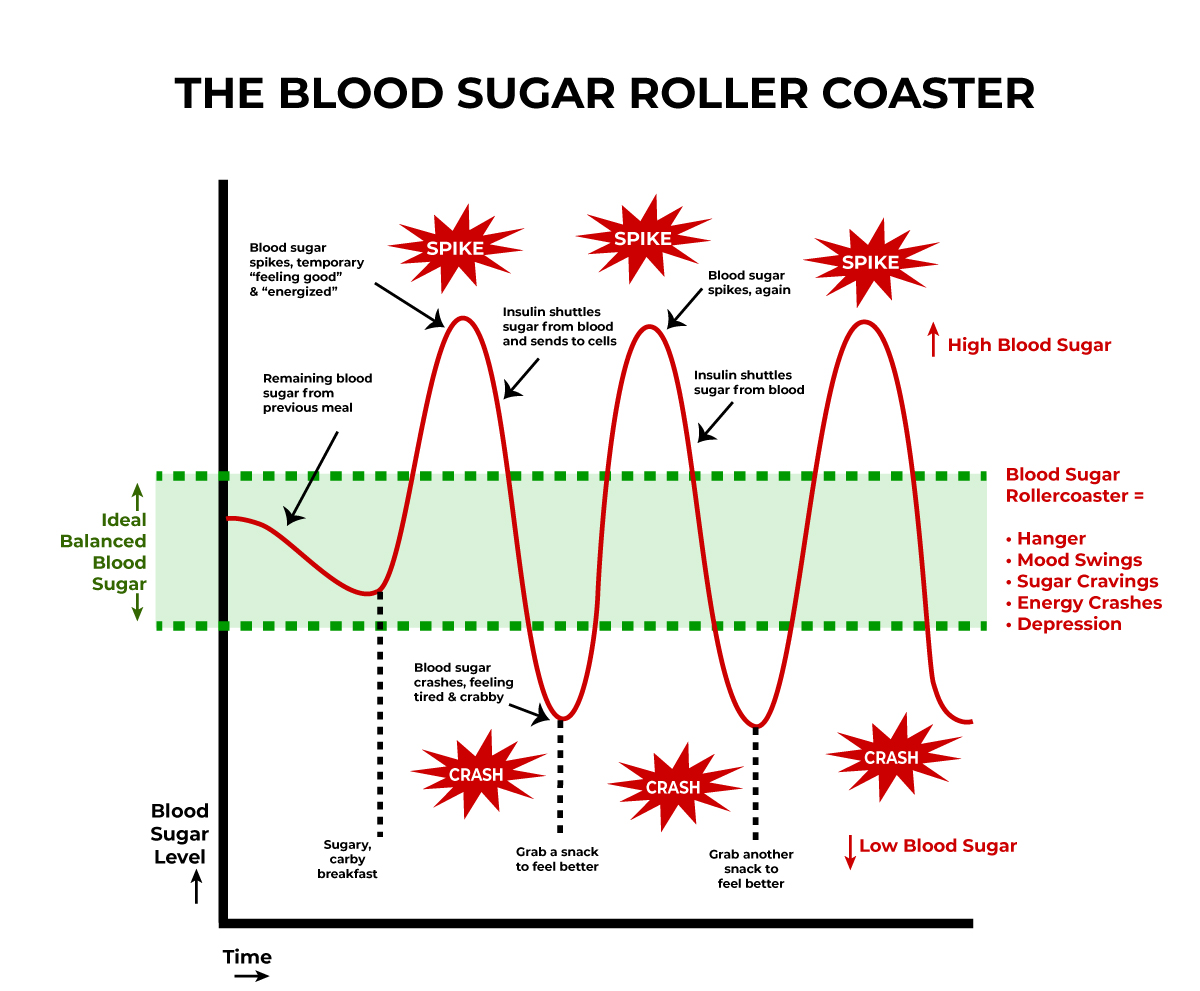
The consequences of constantly eating high sugar and high carb foods
As you can see, starting the day off with a carbohydrate-rich breakfast sets the tone for the day right out of the gate with a big blood sugar spike. Then comes the drop and if your choice for a snack, for a quick jolt of energy to bounce back is carb or sugar rich, you can see how the cycle continues. Your first meal sets the tone for the day and having balanced blood sugar levels all day means controlled energy levels, balanced moods, less cravings, no crashes or headaches and you aren’t continuously chasing your hunger.
How to Get off The Blood Sugar Roller Coaster – What Can You Do?
‣ Eat Enough Healthy Fats and Quality Proteins
Fat and protein have very little affect on blood glucose levels, compared to carbohydrates. Protein and fat also blunt the insulin release from the carbs on your plate. Protein and fat also send signals to your brain that you are full via important hunger hormones that help you avoid overeating. At every meal, prioritize a quality protein on your plate first, be sure you are including some healthy fats (read more about health fats here) if the protein you are eating is lean and doesn’t include enough on it’s own and fill the rest of your plate with nutrient-dense, colorful, in season non-starchy veggies. Dark leafy greens are one of my favorites for lots of important nutrients and fiber.
‣ Reduce Your Refined Carbohydrate Consumption and Avoid Excessive Sugar
Focus on quality of carbohydrates, balance of macronutrients (carbs not being the dominant), bio-individuality, everyone needs different amount of carbohydrates. Prioritize nutrient-dense whole food carbohydrates, think of a food that you could eat that you can imagine growing in nature, exactly as it is on your plate. These foods should be prioritized as your source of carbohydrates over refined carbohydrates and sugar-rich foods. The amount of carbohydrates each individual may need will depends on many factors, hormone health, HPA-axis health, age, gender, activity level, etc. If you determine that you do want/need to include more carbohydrate-dominant foods in your day, I recommend saving your starchy-veggies or carbohydrate-rich foods for your last meal of the day, this way, any drops in blood sugar are happening at a time of day where your energy would naturally be dipping to prepare for bedtime, any cravings that result won’t be a struggle. You will be asleep. Start the next day with a strong, protein and fat-rich breakfast so you can continue to keep things level and balanced throughout your day, with ease.
‣ Avoid Unnecessary, All-Day Snacking
Continuously eating, all day, will keep blood sugar levels either continuously elevated which means elevated insulin all day or it will be stuck in the loop of going up and down, all day. It’s not that snacking is inherently bad, but if you struggle with energy issues, if you crash halfway through the day, if you experience high highs and low lows that make you feel like you need to snack – this could be an indication you aren’t eating enough or properly at meal time or that your blood sugar is significantly imbalanced. Consider eating more at meal time and prioritizing protein and fat over carbohydrates and be sure you are eating enough. If you are eating protein and fat as the main focus of your meals and you are still feeling the need to snack all day, that this means you are likely not eating enough food. Focusing on both of these should help with the need to snack. If reducing your refined carbohydrates and sugar is a new way of eating for you, snacking may be helpful until your blood sugar levels are more balanced, so it is suggested that you consider protein and fat forward snacks when you you do snack. This post includes lots of options.
‣ Move Your Body
In our current, modern lifestyles where stress and sympathetic nervous system dominance becomes the norm, if we remain sedentary we the cortisol being released into our blood streams to keep circulating longer than it should. This can have detrimental long-term consequences but at the very least it can further dysregulate blood sugar levels. Physical movement can help stress management overall, but it can also help process out stress hormones that are present in the body more quickly, but movement is also an incredible method for using up excess blood sugar and increase insulin sensitivity. Even just one 30 minute session has been shown to improve insulin sensitivity by decreasing glycogen synthesis.2https://www.ncbi.nlm.nih.gov/pmc/articles/PMC3381815/
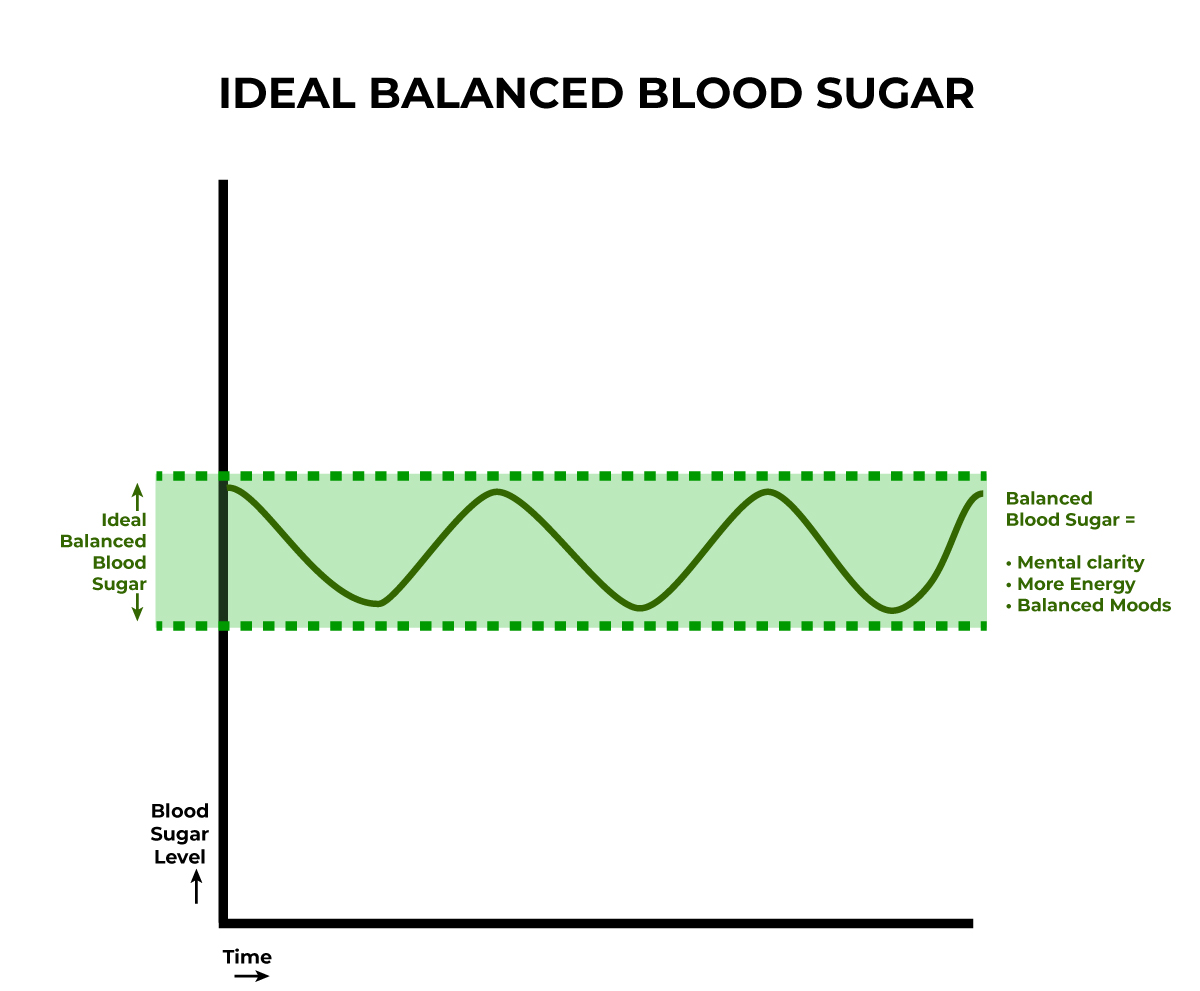
Looking for more support?
‣ Strong All Day Long
if you are experiencing daily energy crashes, hanger, cravings, mood swings and you are looking to make a few simple, easy-to-implement shifts right away, this 5-day program and 7-day meal plan are for you!! I am giving you the 5 big solutions I share with EVERY one of my 1:1 nutritional therapy clients, these shifts bring huge results with minimal efforts. There’s no diet, there isn’t a list a foods to avoid and nothing to track. You will learn how to create healthy plates of food, go more in depth on the various delicious quality proteins and fats to include, tips for meal planning to make eating easy, plus hidden sources of sugar and lots more. This is a focus on the foundations, simple approach to getting your blood sugar under control!! Learn more and get instant access to the program and your meal plan here.
‣ Keto for You
this program is designed to assist you in using a food-as-medicine, healing ketogenic approach to support your body is switching away from relying on sugar as it’s source of fuel. If you are the constant blood sugar roller coaster has resulted in metabolic dysfunction, an inability to lose fat, inflammation and joint pain, hormone imbalances and beyond and you are ready to get on the other side of these once and for all – this fully personalized nutrition program and masterclass will help you in finally taking control of your health and ditching the constant dieting roller coaster of on-again / off-again extreme restriction that never works. This 8 week program is full of customized nutritional protocols, supplement recommendations, 8 weeks of meal plans and recipes, weekly mindset practices, amazing expert guest teachers and in-depth learning so you can create a sustainable lifestyle that will be right for you. Learn more and sign up now here.
This program is designed to support you in using a ketogenic approach as a powerful intervention and healing tool to guide you in creating a sustainable fat-fueled lifestyle for yourself for long-term, so you can adjust and shift as life changes – so you can finally ditch the sugar fueled, blood sugar crashing, inflammation-causing approach that hasn’t been working for you. Head here to learn more and sign up. Enrollment is open for just a short time and the program will not be available again until later in 2020. If you aren’t sure if keto is the correct approach for you, you can watch this FREE online workshop Is Keto for You? to learn more or book a FREE 15-minute call with me and I am happy so answer your questions.
‣ 1:1 Nutritional Therapy and Health Coaching Support
If you are concerned there is more going on at a root cause level, possibly gut imbalances or pathogens, food sensitivities, complications from autoimmune disease or if you are looking for more direct 1:1 support including personalized action plans, lab testing and interpretations, supplemental support, if you are craving accountability and someone to help you dig deeper along side you, with nutritional support, lifestyle recommendations, mindset and mindfulness practices and more – working together one-on-one would be a really great option for you. You can apply to be a client here. Once I review your application, I will contact you about scheduling your FREE discovery call and we can decide if we are a good fit for one another.
PLEASE NOTE: Low post-meal blood sugar levels can happen to folks with normal fasting blood sugars, it can happen to someone who is insulin resistant and obviously in individuals with diabetes but it can also be a symptom of some types of Polycystic Ovarian Syndrome – with all of these scenarios, this type of low blood sugar is referred to, as mentioned above, reactive hypoglycemia. In most cases this type of low blood sugar can be treated with a lower carbohydrate approach, to balance blood sugar levels. Medically diagnosed hypoglycemia is different and should be treated with a health care practitioner, if you experience consistently low blood sugar levels and you are a diabetic on medication you may need to work with your doctor on changing your medication levels to match your carbohydrate intake. Ongoing low fasting blood sugar levels can also occur in people who do not have diabetes and can be the result of a serious underlying medical condition. If you have continuously low fasting blood sugar levels and do not take diabetes medications, you should see your healthcare provider.
Please Stay Tuned for Additional Articles in this Series Where You will Learn:
The Long-term Consequences of Imbalanced Blood Sugar
How Stress Affects Blood Sugar
Other Factors to Consider that Could Raise Your Blood Sugar
and More.
Got questions you want to be sure get covered in future articles, leave your comments below.
References
1. ↑ https://academic.oup.com/ajcn/article/87/5/1254/4650389 2. ↑ https://www.ncbi.nlm.nih.gov/pmc/articles/PMC3381815/ -
Between Meals Podcast. Episode 41: Learning to Love and Forgive Yourself
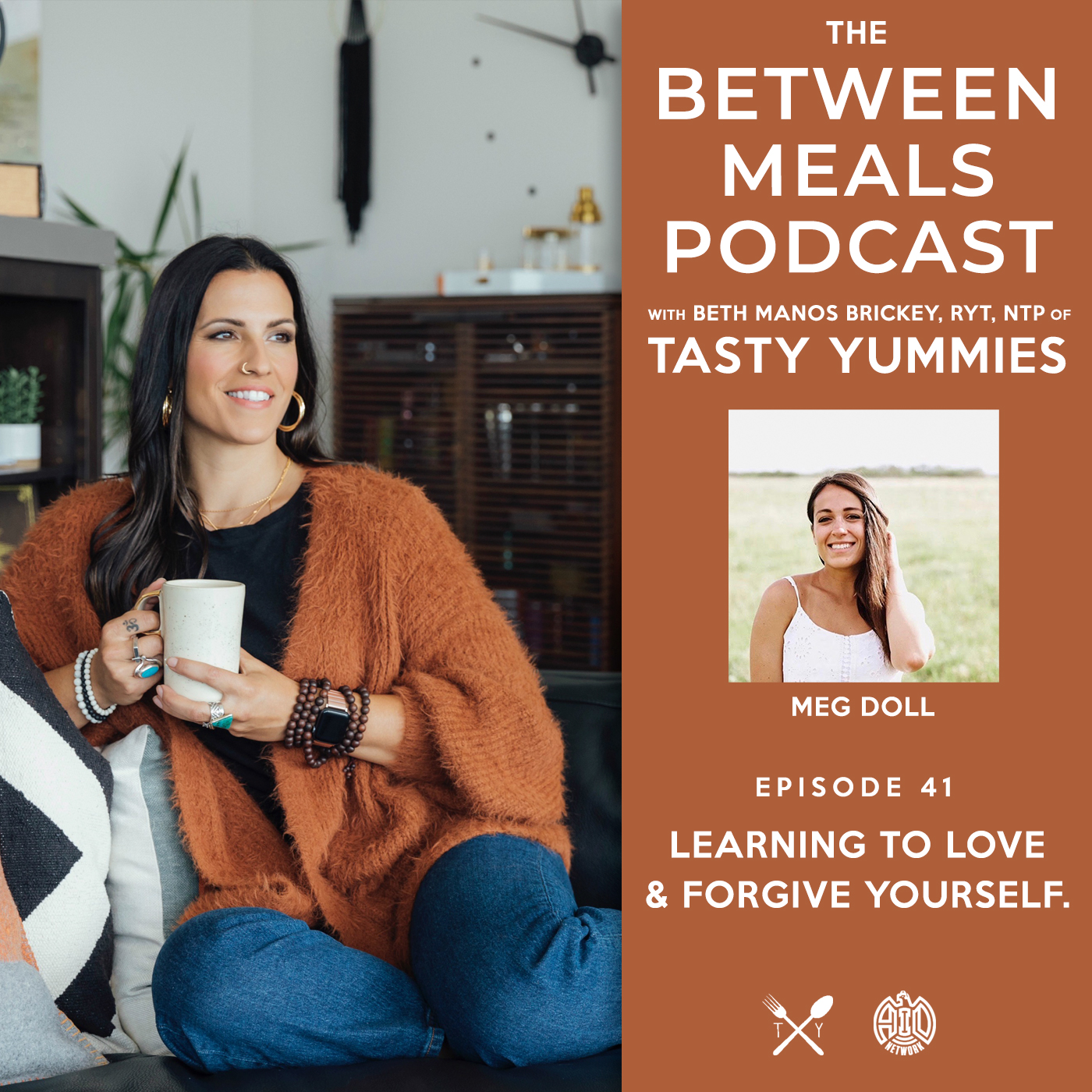
LISTEN NOW ON ITUNES
(Listen on iTunes)
No. 41 | Learning to Love and Forgive Yourself
In this episode I am joined by Meg Doll and we chat all about learning to love and forgive yourself and how self acceptance is the key to moving beyond needing to be fixed.
In this episode:
- Meg reflects on the first time in her life, feeling the need to be fixed and feeling like she wasn’t good enough.
- Struggling with disordered eating, beginning at the age of 10.
- Why we need to be nourished in order to thrive.
- How Meg finds gratitude for the pain she experienced through disordered eating.
- When the fear of food escalates.
- How to recognize if the patterns are disordered eating?
- Disassociating from your thoughts.
- The importance of taking care of yourself.
- When does control become the issue?
- How control expands into other areas of your life?
- Realizing the number on the scale is B.S.!
- You are the ONLY one who can dictate how you feel about yourself.
- Finding body neutrality.
- Diving into the beliefs you are holding onto that / subconscious / old narratives and beliefs.
- Self forgiveness and placing loving where there wasn’t loving before.
- Using your intuition.
- Signs that you are underfed.
- Eating intentionally vs. intuitively.
- Looking at your body through a new lens.
Meg Doll is a Registered Holistic Nutritionist, Restorative Wellness Practitioner, and Certified Spiritual Coach passionate about leading women to mental strength, emotional intelligence, and a loving relationship with self through consciousness, self compassion, forgiveness, and loving. Visit her website here. She has a weekly podcast, Unbreakable You, and you can always find her on Instagram at @iammegdoll
LISTEN NOW ON ITUNES
(Listen on iTunes)
You can now subscribe to the Between Meals Podcast on Apple iTunes, Google Play, Spotify and Stitcher
THANK YOU FOR LISTENING:
Since we are still pretty new on iTunes, please do us a solid and SUBSCRIBE and of course, we would be honored if you took the time to rate and review the show, this will help more people find us and help the show to grow! If you liked this episode or others, please share on social media and tag us, share with friends and family, etc – this means the world!
-
Between Meals Podcast. Episode 40: Trust vs. Control and Learning How to Trust Yourself
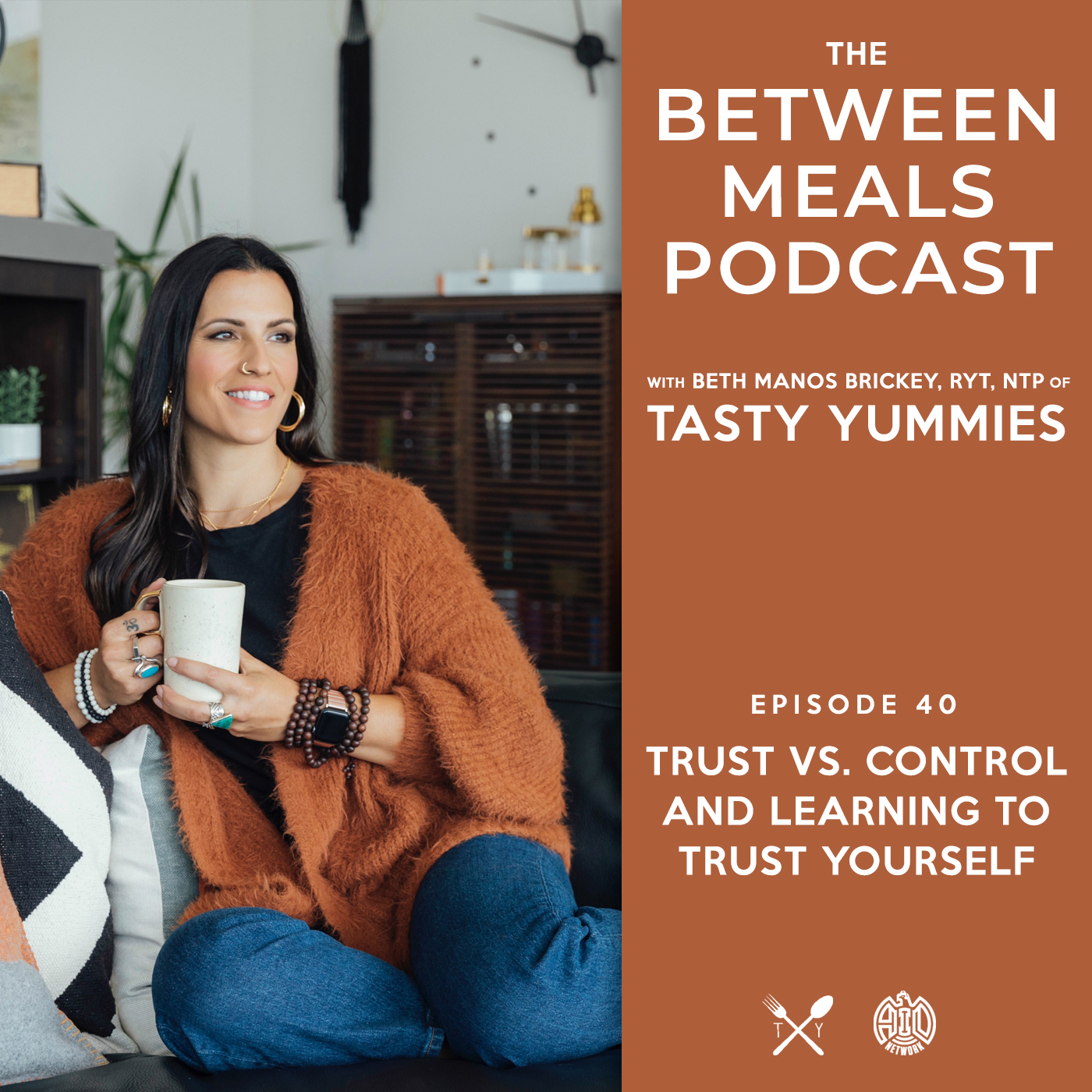
LISTEN NOW ON ITUNES
(Listen on iTunes)
No. 40 | Trust vs. Control and Learning How to Trust Yourself
Finding a sense of autonomy and discovering how to live and eat well with confidence for YOU requires trusting yourself. Control becomes the choice when there is a lack of self trust, control promises a false sense of safety and often results in a desire for rebellion.
Learn the differences between control and trust and simple tips for how you can learn to trust yourself so you can eat with confidence and create a sense of consistency.
Download your FREE Food and Mood Journal Here.
Join the Strong All Day Long 5 Day Video Program Now
LISTEN NOW ON ITUNES
(Listen on iTunes)
You can now subscribe to the Between Meals Podcast on Apple iTunes, Google Play, Spotify and Stitcher
THANK YOU FOR LISTENING:
Since we are still pretty new on iTunes, please do us a solid and SUBSCRIBE and of course, we would be honored if you took the time to rate and review the show, this will help more people find us and help the show to grow! If you liked this episode or others, please share on social media and tag us, share with friends and family, etc – this means the world!
-
Between Meals Podcast. Episode 39: The Struggle and The Strength in Slowing Down
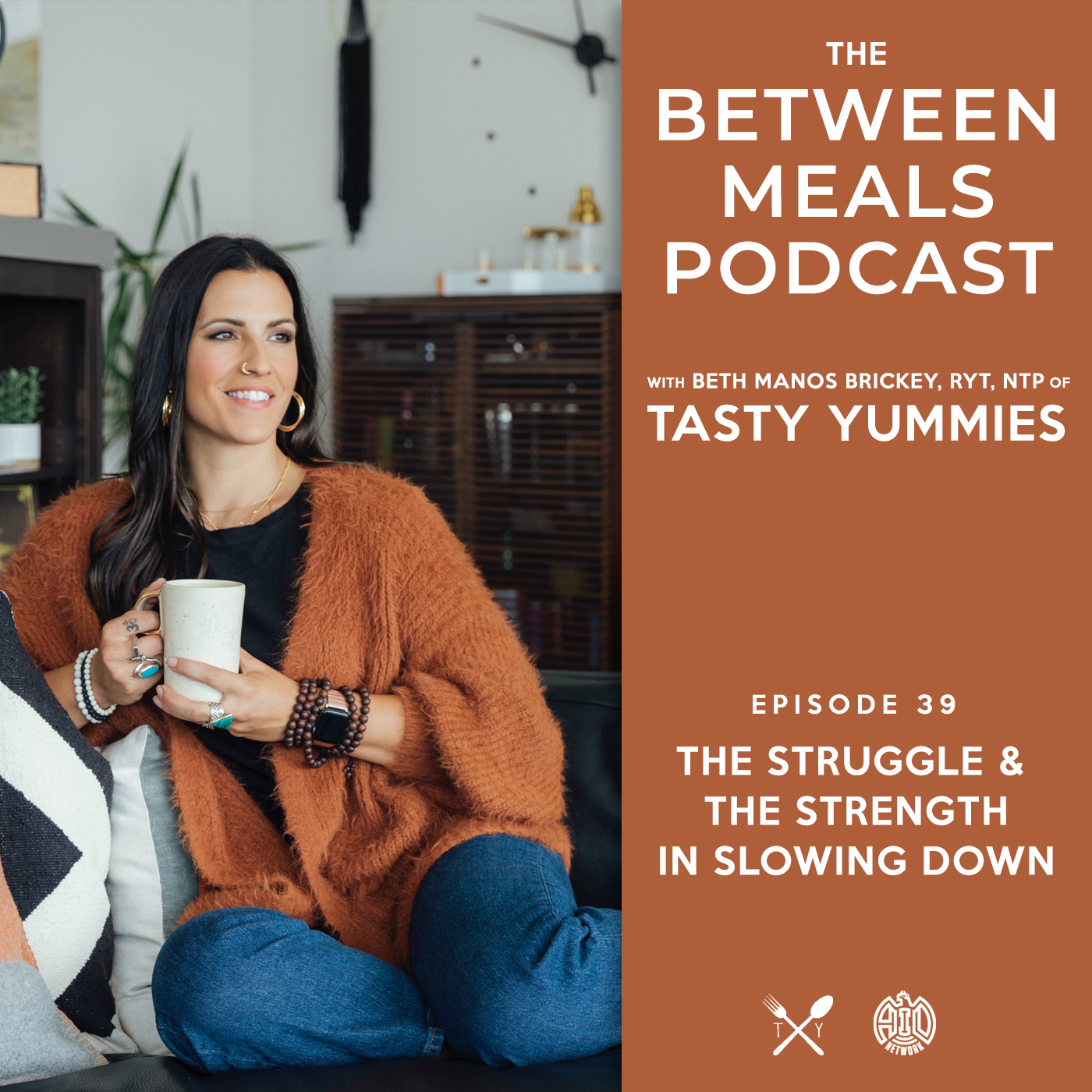
LISTEN NOW ON ITUNES
(Listen on iTunes)
No. 39 | The Struggle and The Strength in Slowing Down
With busyness commonly being over-glorified and the “hustle” often being a measure of success – I don’t think slowing down gets nearly enough credit or recognition! Learn how to create a larger impact in your life and honor what your body needs so you can continue to live your life in balance and showing up as the best you!!
In this episode we’re talking about why we tend to struggle so much with allowing ourselves to slow down and how to find strength in giving yourself space to do so.
I am sharing the 5 big ways I can personally tell when I am approaching burn out plus my 7 simple tips for slowing down – including some invitations and questions to ask yourself.
Join the Strong All Day Long 5 Day Video Program Now
LISTEN NOW ON ITUNES
(Listen on iTunes)
You can now subscribe to the Between Meals Podcast on Apple iTunes, Google Play, Spotify and Stitcher
THANK YOU FOR LISTENING:
Since we are still pretty new on iTunes, please do us a solid and SUBSCRIBE and of course, we would be honored if you took the time to rate and review the show, this will help more people find us and help the show to grow! If you liked this episode or others, please share on social media and tag us, share with friends and family, etc – this means the world!
-
6 Tips for Supporting Your Immune System While Traveling*
This post was created in partnership with MegaFood®. I am proud to work with brands that care about the health of its consumers and the planet. As always, all opinions, ideas and text are my own. Thanks for supporting the sponsors that allow me to create new and special content like this for Tasty Yummies.
With the holidays upon us, for many this means traveling and being on-the-go, a lot! Add to that the stress of the season and this can certainly put an extra burden on our immune system. If you want to fully enjoy your travel while still taking the necessary steps to protect yourself, read on.
Here are My 6 Tips for Supporting Your Immune System While Traveling*:
1) Eat Well and Stay Hydrated
Eating on the go can certainly be a bit more challenging than cooking and eating a balanced meal at home. Prioritizing nutrient-dense, whole foods like dark leafy greens, quality proteins and healthy fats, while limiting processed foods and sugar (which may weaken the immune system) 1http://www.progressivehealth.com/does-eating-sugar-increase-your-risk-of-influenza.htm can be beneficial for promoting good immune function. And don’t forget the water! Hydration is especially important with air travel. Flying can cause more rapid dehydration and planes are quite dry. Be sure you are adequately hydrated before your day of travel begins and have a plan in place for staying hydrated while you are on the go, packing water or a refillable water bottle whenever you can.
2) Prioritize Your Sleep
Sleep is crucial to a well-functioning immune system and managing inflammation. Before, during and after your travel, do the best that you can to prioritize your sleep. Sleep is one of THE most important and often overlooked foundational aspects of our health. Sleep is critical to many ongoing, vital processes in the body, but it’s especially important when we are warding off the nasties. Our body repairs and rebuilds itself while we sleep. The more fatigued we are the more susceptible we can be to illness. 7 to 9 hours of sleep a night is a great goal for supporting the body and the immune system. 2https://www.ncbi.nlm.nih.gov/pmc/articles/PMC3256323/ If you need help, try this Sleep Meditation or consider Melatonin supplementation, like the MegaFood Melatonin Berry Good Gummies
3) Manage Your Stress and Support Your Adrenals
Stress can cause inflammation in the body and if the adrenal glands and cortisol, both of which are involved in the body’s stress response system, are constantly struggling to keep up, it will most certainly affect your immune system. Travel can be especially challenging and stressful on the body and this is why folks often find themselves under the weather after a busy travel season. Before, during and after your travel, take the time to implement simple stress management practices that work for you: your self-care routines like journaling, deep breathing, meditation, a gentle walk, an epsom salt bath with calming essential oils, etc. No matter where in the world your travels take you, create space and find time to relax and chill out, get out into nature and feel grounded – this can offer so much support for your immune system and other essential systems of the body.
4) Move Your Body
Exercise and movement helps to improve the circulation of the body’s lymphatic system. It doesn’t need to be extreme or intense at all. When you get to where you are going, consider a little gentle movement like walking or even just a little gentle bouncing (even dancing, jumping or rebounding on a trampoline) these are really great ways to improve lymphatic flow. This system of the body helps toxins to be cleared out of the body and allows the nutrients you are consuming to be delivered where they need to go.
5) Consider Immune Supporting* Supplements and Superfoods
A few of my favorites include Vitamin C, Elderberry, Zinc and Echinacea. My go-to, trusted supplement for immune support,* especially when traveling, is MegaFood Immune Defense*. It is made with Vitamin C, Zinc and Black Elderberry, together with bitter and phytonutrient-rich herbs, including echinacea and andrographis. When you feel the need, take two tablets three times per day for five days to support your immune system when you need it most.* The perfect support prior to travel and while you are away and on the road.
– MegaFood Immune Defense* features:
- Vitamin C and Zinc – both of which are nutrients essential for healthy immune function*
- Black Elderberry fruit can be used in the early stages of seasonal challenges to support immune function*
- Bitter and phytonutrient-rich herbs, echinacea and andrographis, known for powering the immune system*
– Bone Broth – The glycine found in bone broth has been shown to support digestion, support gut health (which is home to much of our immune system) and help reduce inflammation. 3https://journals.lww.com/co-clinicalnutrition/Abstract/2003/03000/L_Glycine__a_novel_antiinflammatory,.13.aspx Bone broth is rich in gelatin, collagen and amino acids which can support the gut, improve healing, and help support the health of individual immune cells. From a properly functioning digestive system to a strong immune system and well functioning brain – our gut is foundational to our vitality.*
– Probiotics and/or fermented foods are another great way to support the health of the gut and it can be a really great way to rebalance the microbiome which is home base for a majority of the immune system.* Read more about how to find the probiotic supplement that is right for you and the benefits of a quality probiotic.
– Some of my other immune support go-to’s include oregano oil, adaptogenic mushrooms, and colloidal silver. You can read more about other immune supportive foods and supplements I recommend and include here.*
6) Finally, Please Protect Yourself and Others
Wash your hands. Avoid touching things when you are in public and then touching your face. Your mucus membranes like your mouth, nose and eyes can be little germ portals if you are not careful. Also, be sure to cover your mouth if you are coughing or sneezing, especially in public. If you’re sick and you want to avoid passing it to others the best thing you can do is stay home and allow your body the opportunity to rest. Don’t try to be a hero. Stay home and take care of yourself. However, if staying home isn’t an option or changing flights isn’t an easy feat – if you are sick or even if you are immune compromised or you simply wish to be extra cautious, please consider wearing a mask while in public. It’s a really great way to stay protected and to protect others. Illness happens and sometimes travel plans can’t be changed, so whenever possible try to be incredibly respectful to others to avoid spreading it.
Bonus Tips:
Consider having your Vitamin D levels checked: Low Vitamin D is often associated with seasonal challenges and adequate levels are important for health and vitality. 4https://www.jabfm.org/content/22/6/698 Consider having your Vitamin D levels evaluated by your healthcare provider and supplementing with to support a healthy immune system.*
With a healthy gut being paramount to a healthy body, especially a strong immune system please check out my 9 tips for good gut health during the holidaysto protect and support your immune system this season!*
*These statements have not been evaluated by the Food and Drug Administration. This product is not intended to diagnose, treat, cure or prevent any disease.
References
1. ↑ http://www.progressivehealth.com/does-eating-sugar-increase-your-risk-of-influenza.htm 2. ↑ https://www.ncbi.nlm.nih.gov/pmc/articles/PMC3256323/ 3. ↑ https://journals.lww.com/co-clinicalnutrition/Abstract/2003/03000/L_Glycine__a_novel_antiinflammatory,.13.aspx 4. ↑ https://www.jabfm.org/content/22/6/698 -
Between Meals Podcast. Episode 38: How to Get Unstuck and Discover What’s Really Holding You Back
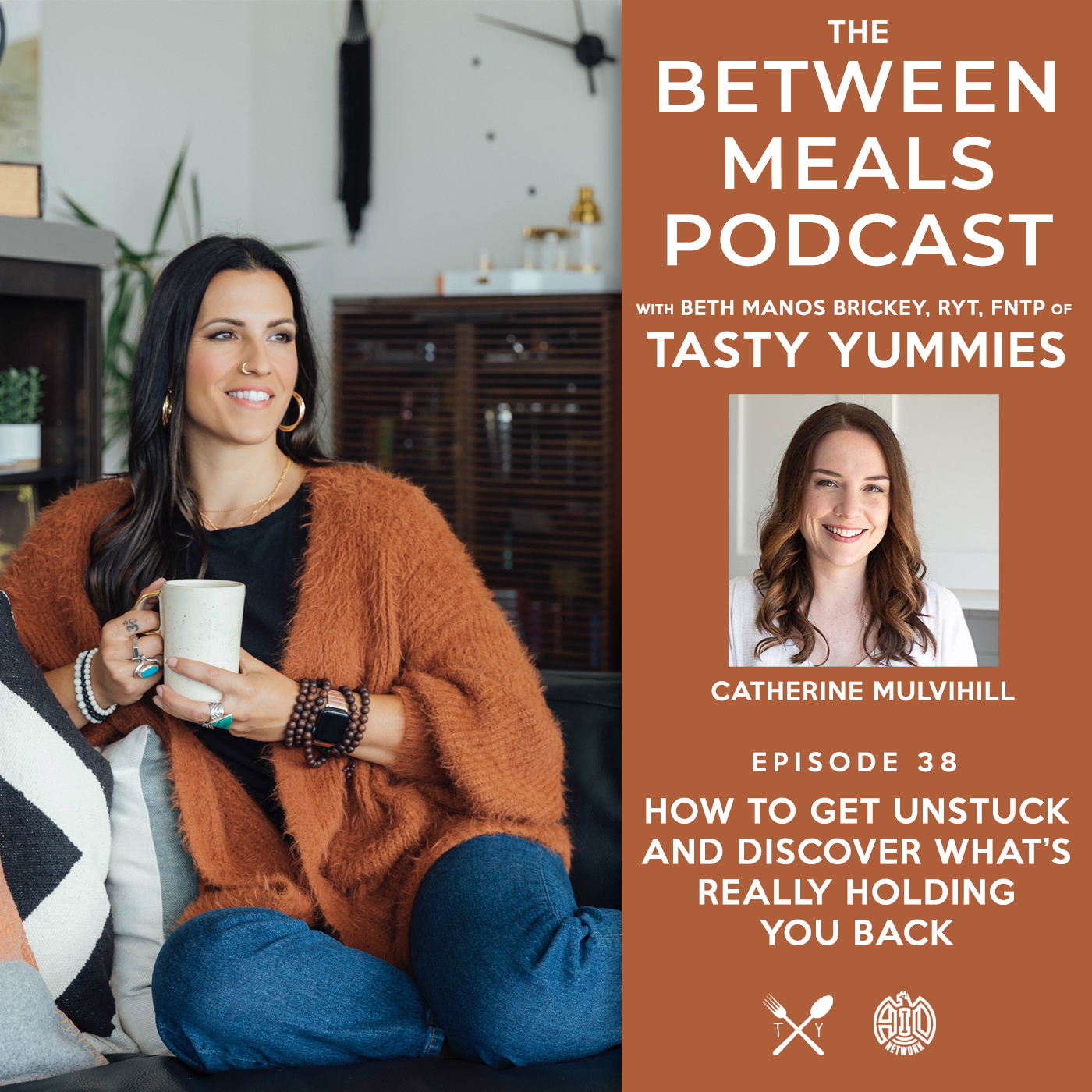
LISTEN NOW ON ITUNES
(Listen on iTunes)
No. 38 | How to Get Unstuck and Discover What’s Really Holding You Back
with Catherine MulvihillHave you been feeling stuck? Unsure of what exactly is holding you back from reaching your goals? THIS EPISODE IS FOR YOU!
In this episode I am joined by Catherine Mulvihill. Cat is a personal development coach and Functional Nutritional Therapy Practitioner whose work focuses on health, habits and mindset. She helps individuals who are struggling to maintain healthy habits to uncover the hidden reasons they are stuck so they can finally break the on-again, off-again cycle for good. Catherine is a skilled speaker, trainer and facilitator with over 15 years of experience leading workshops and programs, including the Immunity to Change™ framework and The Four Tendencies Workshop.
Learn how to get unstuck and finally figure out what is holding you back from being consistent with your healthy habits.
This episode is great if you are ready to uncover the real reasons you feel stuck so you can take the right steps to move forward and see the progress you desire.
In this episode:
- how you can navigate adjusting your mindset while recognizing you don’t need to be “fixed”
- how to show yourself compassion and acceptance in the process of healing
- what is the Immunity to Change Process and why is it effective?
- identifying the ways you are holding yourself back
- are there beliefs and assumptions that you hold are keeping you from moving forward?
- how can you challenge and test these beliefs?
- how to be a “curious researcher”
- where can you get started when you can’t figure out what is holding you back?
- the three levels to getting unstuck!
- what are the two types of challenges we face when we are stuck
- what questions can you ask yourself to investigate the fears that come up and keep you from your goals?
- what is the Confirmation Bias?
- three approaches to challenge your mindset
- how can you use the Four Tendencies Framework to start to identify how you respond to expectations and respond to accountability
- how to know when “giving yourself grace” is actually hurting you and just becoming excuses?
- building the confidence to trust you can get yourself unstuck
- and so much more!!
Check out Cat Mulvihill’s website
Follow @thehappyinsides on Instagram
Join the Strong All Day Long 5 Day Video Program Now
LISTEN NOW ON ITUNES
(Listen on iTunes)
You can now subscribe to the Between Meals Podcast on Apple iTunes, Google Play, Spotify and Stitcher
THANK YOU FOR LISTENING:
Since we are still pretty new on iTunes, please do us a solid and SUBSCRIBE and of course, we would be honored if you took the time to rate and review the show, this will help more people find us and help the show to grow! If you liked this episode or others, please share on social media and tag us, share with friends and family, etc – this means the world!
-
Between Meals Podcast. Episode 37: 6 Tips to Handle the Holidays

LISTEN NOW ON ITUNES
(Listen on iTunes)
No. 37 | 6 Tips to Handle the Holidays
If you are ready to ditch the food fear, the shame, the guilt, the extremes and the general dread of holiday food, eating and events – this episode is for you.
Learn about the extremes most people default to during the holidays and why they just don’t work, plus catch my simple tips for creating a healthy holiday season that is not just doable, but actually enjoyable!
If you want to head into the holiday season feeling nourished, well fed and energized – join the Strong All Day Long 5 Day Video Program now. Crush the crash, get a hold of your hanger, master the mid-day slump, kick the constant cravings for sweets, manage your mood swings. This is not a diet and there are no food rules – it’s just 5 days of simple foundational shifts!! You pick your start date: https://tasty-yummies.com/strong
And to make the holidays even easier here are my yearly quick fire tips…
- Ditch the idea that you are either on track or you are off track – as my friend Cristina Curp says “Burn the wagon!”
- Ask yourself those important questions that help you have an awareness BEFORE you go in without a plan.
- Put foods on your plate that make you happy.
- Eat the foods on your plate that make you happy. DO IT!
- Avoid the foods that make you feel like garbage. Or don’t and then be OK with maybe feeling like a hot dumpster fire.
- Give yourself grace – one day is a blip on the radar of your lifetime. Spoiler alert: you can’t undo it all in one day
- Remember: it is not your responsibility to make anyone else comfortable with how you choose to eat.
- STOP GIVING THE FOOD SO MUCH POWER!!!!!
- Get in a holiday workout if you WANT to or don’t. Just don’t burn to earn, push to punish or fast to blast.
- PLEASE JUST ENJOY THE HOLIDAYS!!!
LISTEN NOW ON ITUNES
(Listen on iTunes)
You can now subscribe to the Between Meals Podcast on Apple iTunes, Google Play, Spotify and Stitcher
THANK YOU FOR LISTENING:
Since we are still pretty new on iTunes, please do us a solid and SUBSCRIBE and of course, we would be honored if you took the time to rate and review the show, this will help more people find us and help the show to grow! If you liked this episode or others, please share on social media and tag us, share with friends and family, etc – this means the world!
-
Between Meals Podcast. Episode 36: The Return of Mark. A Couple’s Q&A.
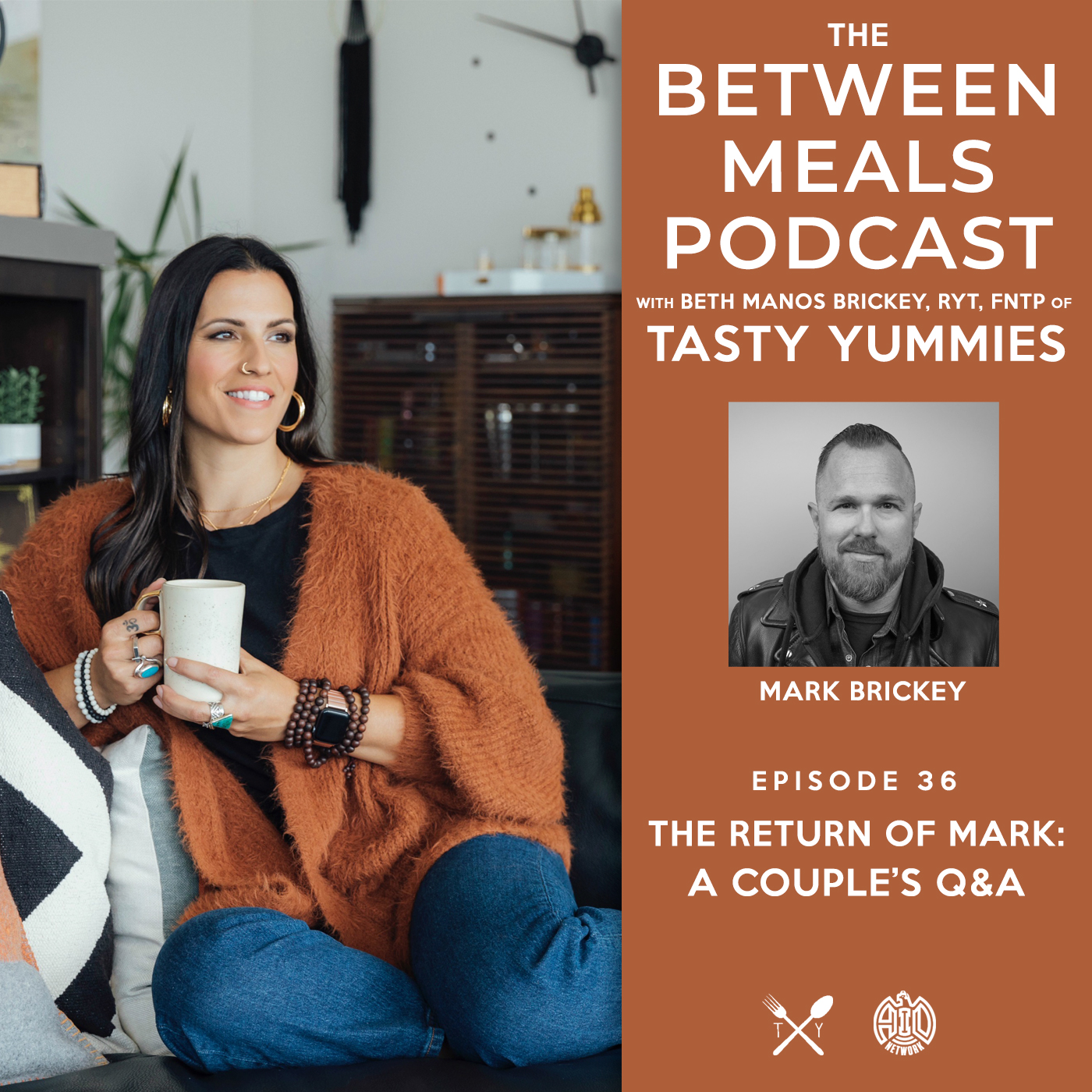
LISTEN NOW ON ITUNES
(Listen on iTunes)
No. 36 | The Return of Mark. A Couple’s Q&A.
My trusty partner in crime, Mr. Mark Brickey came back after some time away, for a little Q&A episode. We are answering some of your burning questions.
Check out Mark’s podcast Adventure’s in Design
For a more in depth discussion about trauma check out episode 15 with Dr. Keesha Ewers
If you have a question you would like answered on an upcoming episode of the podcast please submit it here – I hope to do a once-a-month Q&A episode if there are enough questions.
LISTEN NOW ON ITUNES
(Listen on iTunes)
You can now subscribe to the Between Meals Podcast on Apple iTunes, Google Play, Spotify and Stitcher
THANK YOU FOR LISTENING:
Since we are still pretty new on iTunes, please do us a solid and SUBSCRIBE and of course, we would be honored if you took the time to rate and review the show, this will help more people find us and help the show to grow! If you liked this episode or others, please share on social media and tag us, share with friends and family, etc – this means the world!
-
Between Meals Podcast. Episode 35: Is Your Healing Diet Causing Disordered Eating?
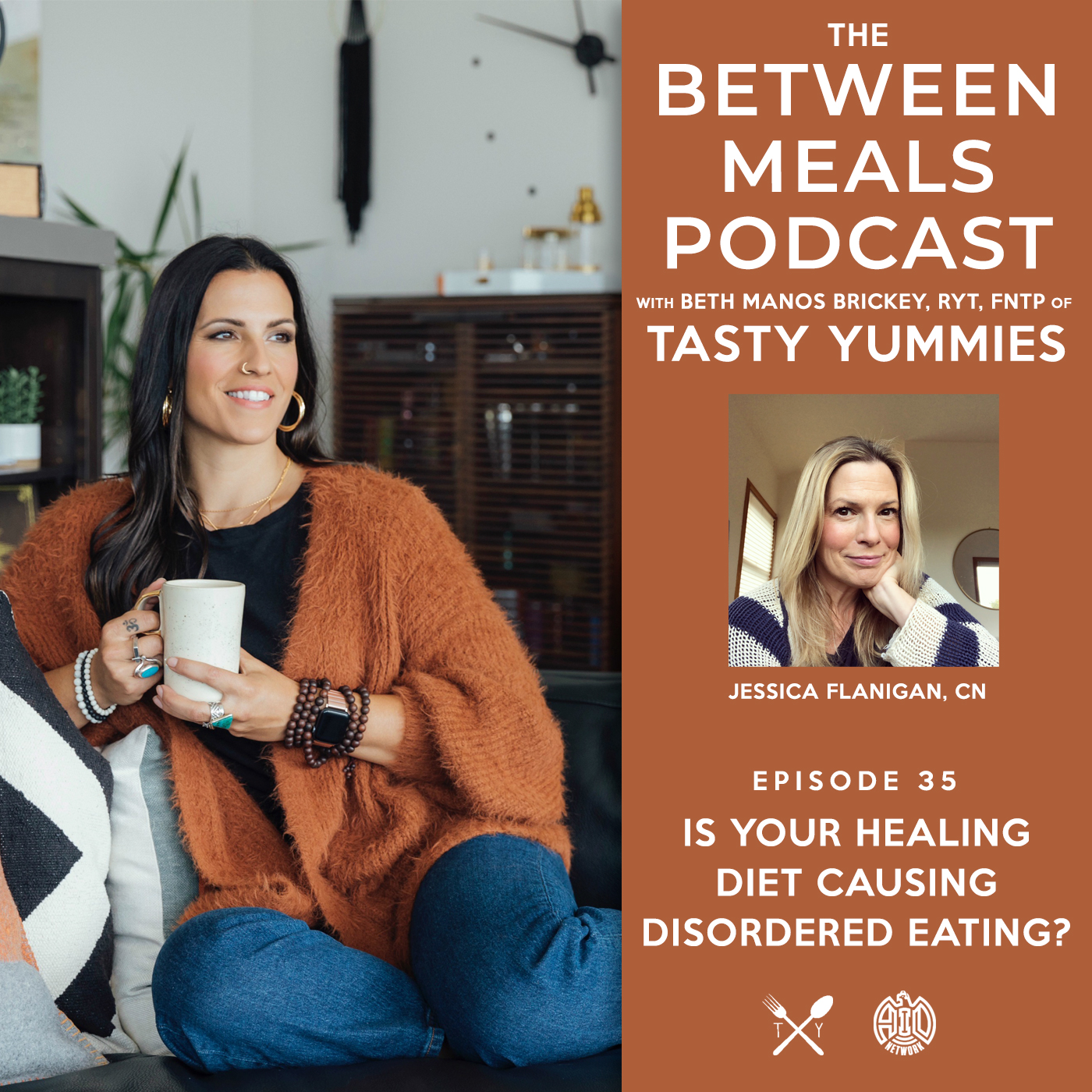
LISTEN NOW ON ITUNES
(Listen on iTunes)
No. 35 | Is Your Healing Diet Causing Disordered Eating?
On this episode of the Between Meals Podcast I am joined by Jessica Flanigan.
Jessica Flanigan is a Clinical Nutritionist, Co-Founder of The Institute of Spiritual Coaching and is the author of the first mind-body book about Autoimmune Disease; The Loving Diet. She has spent the last six years of her clinical nutrition practice focusing on working with clients in Autoimmune Paleo, but has since moved on to more advanced functional medicine based gut restoration applications to remove restriction from her client’s protocols and work with clients struggling with disordered eating with her program Transformational Eating.
In this episode we are investigating and discussing:
– If you’ve ditched diet dogma and you are now profoundly anti-diet are you still following dogma?
– Are you walking through your life seeking safety externally?
– How to heal with love instead of fixing through restriction.
– Our bodies are not built for perfection.
– How to face the parts of you that are painful in your self love journey
– When restrictive diets result in food fear.
– Believing that life is not against you and finding the benefits and lessons in the challenges.
– How to make room for the parts of yourself that are experiencing suffering and shame.
– Self acceptance and neutrality, without judgement.
– How to modulate the immune system when you are experiencing chronic illness
– How can you learn to trust yourself and when it might be time to leave the current approach behind?
– Implementing self forgiveness and loving compassion.
– and so much more.
If you want to learn more about Jessica Flanigan:
Check out her website
Her book The Loving Diet
The Institute of Spiritual Coaching
Read her article The Silent Truth: AIP, Restrictive Diets, Disordered Eating and Orthorexia
LISTEN NOW ON ITUNES
(Listen on iTunes)
You can now subscribe to the Between Meals Podcast on Apple iTunes, Google Play, Spotify and Stitcher
THANK YOU FOR LISTENING:
Since we are still pretty new on iTunes, please do us a solid and SUBSCRIBE and of course, we would be honored if you took the time to rate and review the show, this will help more people find us and help the show to grow! If you liked this episode or others, please share on social media and tag us, share with friends and family, etc – this means the world!
-
Fall Frittata with Pancetta, Apples, Greens and Goat Cheese {grain-free, low-carb/keto, options for whole30, paleo}
This Fall Frittata with Pancetta, Apples, Greens and Goat Cheese is loaded with warming, autumn flavors and some unique, unexpected twists. Wait till you try this one. This frittata is grain and gluten-free, as well as low-carb / keto-friendly, leave out the cheese for paleo, Whole30 and dairy-free. Read on below for many variations and options with this recipe, so many ways to make this one.
There was a time I would feel personally violated when someone would put fruit into my savory foods. I always thought ‘keep your dang fruits out of my salads, thank you.’ Then I discovered the beauty of blueberries or pears in a salad, cranberries with a baked squash and yes, even apples in my eggs.
This fall frittata brings layers and levels of flavors, sweet and savory, warming and cozy. It’s a pretty fuss-free recipe that is perfect for entertaining. A big WOW without much trouble at all. I made this recently when my friend Daniele came to visit. I prepped all the components ahead, when she got here I assembled it all and placed it on my Traeger Grill. We popped a bottle of prosecco and had the time to start getting caught up while the frittata baked.
I really like this frittata on our Traeger Grill. The smokey, wood fired flavor is a really nice addition to everything going on and I love that I avoid standing over the stove and heating up the house – it is still warm here in Southern California, been in the 90s here all week. You can also just easily pop it into the oven.
-
Between Meals Podcast. Episode 34: It’s My Birthday and I’ll Cry if I Want To
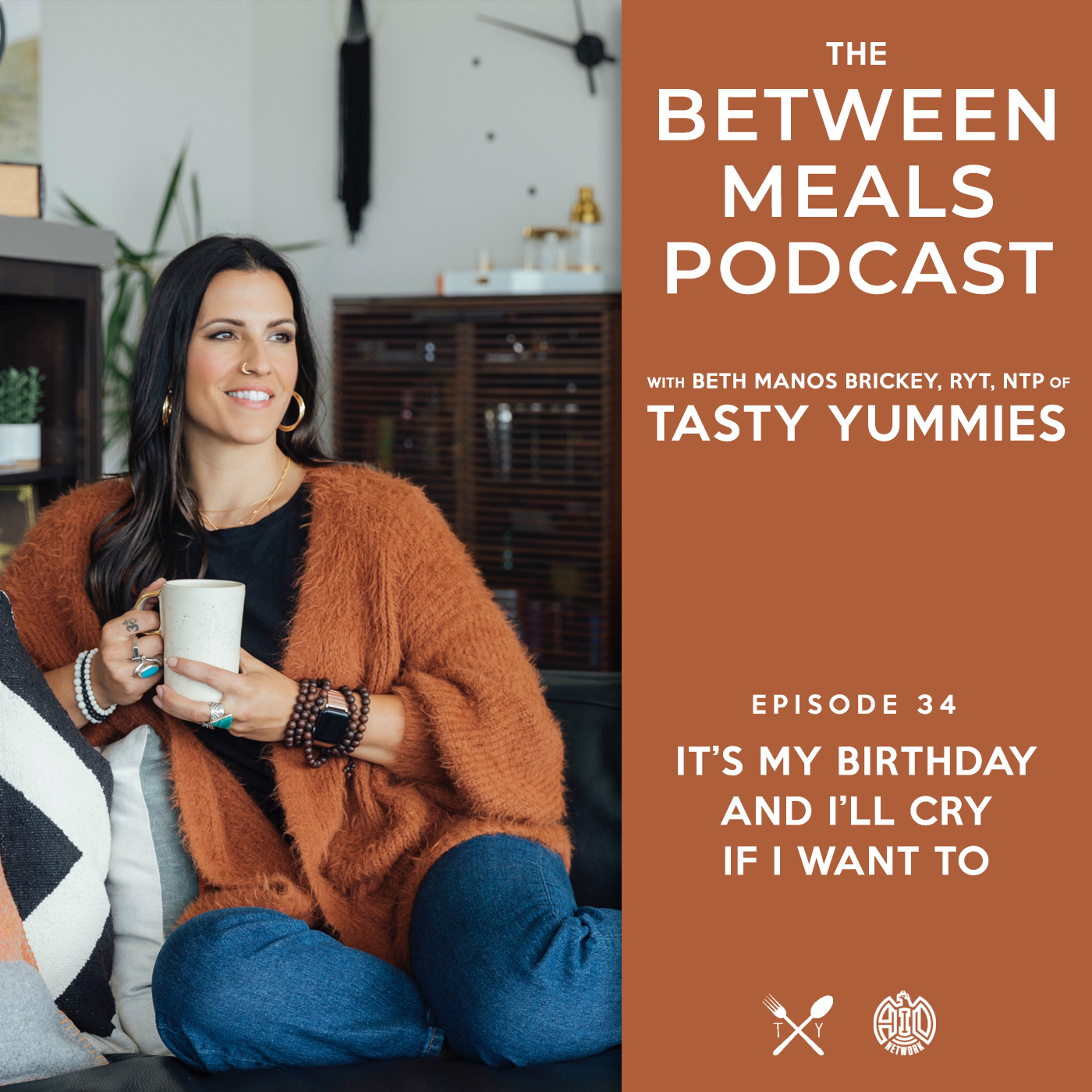
LISTEN NOW ON ITUNES
(Listen on iTunes)
No. 34 | It’s My Birthday and I’ll Cry if I Want To
In this special episode of the Between Meals Podcast I am sharing WHY I am crying as I turn 40 today!!
I am sharing a really pivotal moment in my healing journey and why this birthday is especially meaningful for me.
Plus I am sharing 40 quick thoughts and lessons I have learned along the way.
LISTEN NOW ON ITUNES
(Listen on iTunes)
You can now subscribe to the Between Meals Podcast on Apple iTunes, Google Play, Spotify and Stitcher
THANK YOU FOR LISTENING:
Since we are still pretty new on iTunes, please do us a solid and SUBSCRIBE and of course, we would be honored if you took the time to rate and review the show, this will help more people find us and help the show to grow! If you liked this episode or others, please share on social media and tag us, share with friends and family, etc – this means the world!
-
Between Meals Podcast. Episode 33: Taking Ownership of Your Choices
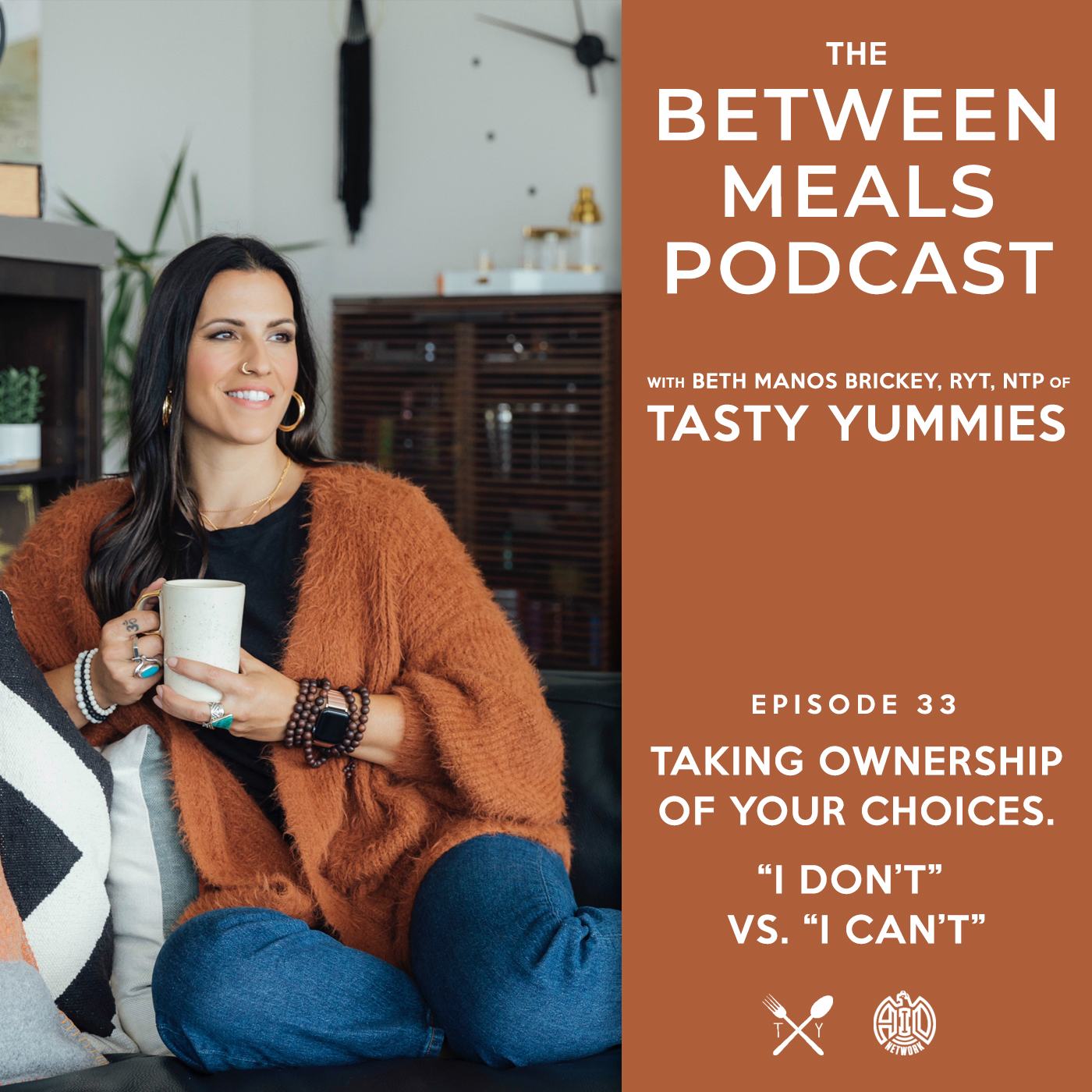
LISTEN NOW ON ITUNES
(Listen on iTunes)
No. 33 | Taking Ownership of Your Choices – I Don’t vs. I Can’t
Sometimes a subtle shift in language and self talk can have a huge impact on how you take ownership of your choices. Stepping into your power and feeling a sense of empowered commitment to your approach
As a continuation of the conversation we had in episode 32, we are talking about how your perception of your rules, whether they are rules or guidelines that are self imposed or not, can really affect your success and your commitment.
None of this is about perfection nor is it a suggestion that rules are the righter only way, but instead it’s about finding peace and ease in the limitations.
AFFIRMATION:
Every time I tell myself “I can’t”, I create a feedback loop that is a reminder of my limitations.
Research Study from Boston College and the University of Houston
“I Don’t” versus “I Can’t”: When Empowered Refusal Motivates Goal-Directed Behavior.
Vanessa M. Patrick and Henrik Hagtvedt
Journal of Consumer Research
Vol. 39, No. 2 (August 2012), pp. 371-381
Published by: Oxford University Press
DOI: 10.1086/663212LISTEN NOW ON ITUNES
(Listen on iTunes)
You can now subscribe to the Between Meals Podcast on Apple iTunes, Google Play, Spotify and Stitcher
THANK YOU FOR LISTENING:
Since we are still pretty new on iTunes, please do us a solid and SUBSCRIBE and of course, we would be honored if you took the time to rate and review the show, this will help more people find us and help the show to grow! If you liked this episode or others, please share on social media and tag us, share with friends and family, etc – this means the world!
-
Between Meals Podcast. Episode 32: Food Rules, Guidelines, Restriction and Freedom
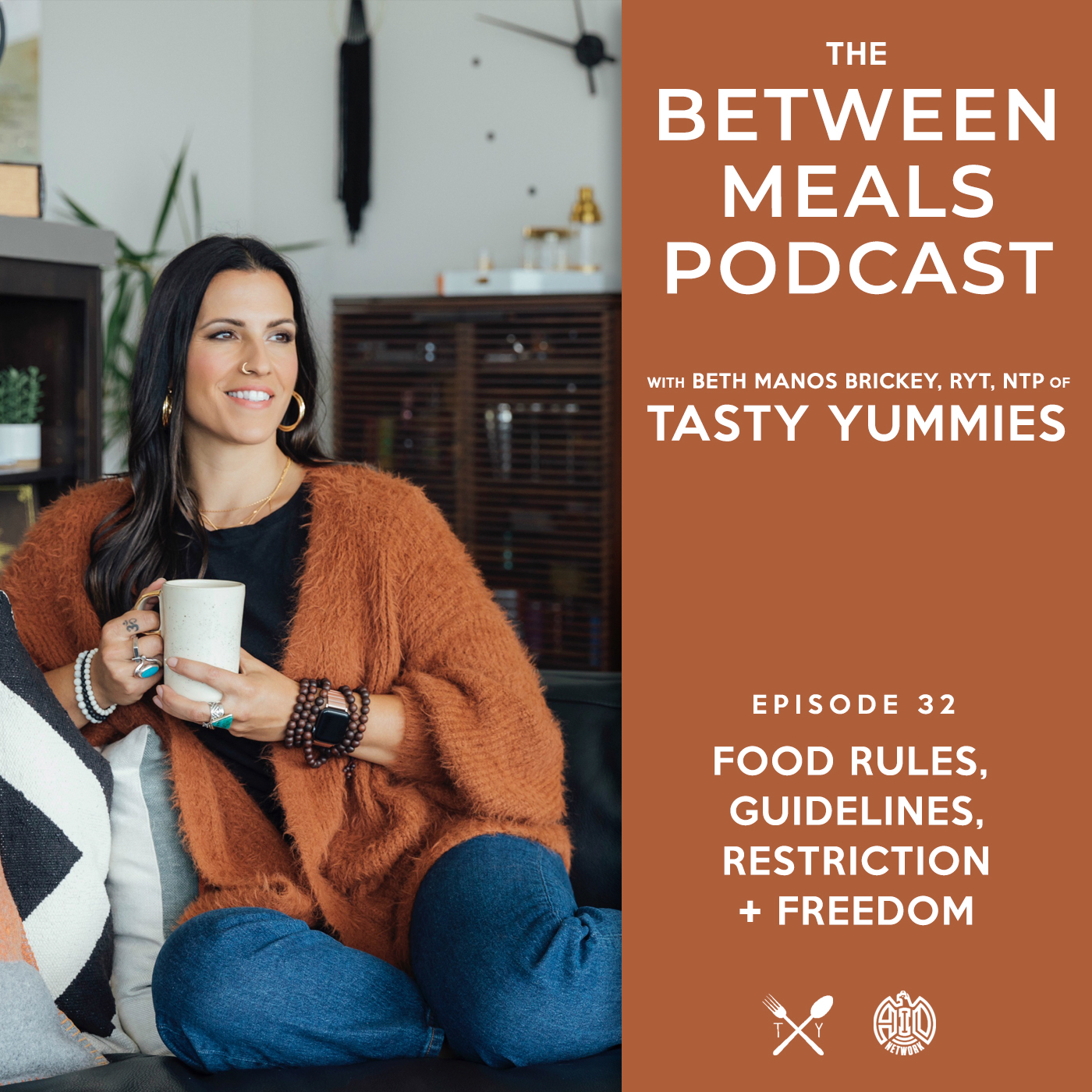
LISTEN NOW ON ITUNES
(Listen on iTunes)
Episode 32: Food Rules, Guidelines, Restriction and Freedom
How do food rules or guidelines make YOU feel? Are you someone who finds comfort or freedom in the structure and direction or do food rules always feel like restriction or toxic diet dogma to you?
In this shorter format episode I am sharing some thoughts that have been heavy on my mind lately and I am diving into why I think we need to consider that individual’s perceptions and tendencies toward rules differ just as much as the individuals themselves do.
I am also sharing some of my personal concerns with the current extreme pendulum swings and the shame-inducing judgement I have seen some folks feel for their personal preferences and tendencies that may differ from others.
If you enjoyed this episode or you have any thoughts at all – please reach out, I would LOVE to hear from you.
Resources Mentioned in this Episode:
Gretchen Rubin’s Four Tendencies Quiz
LISTEN NOW ON ITUNES
(Listen on iTunes)
You can now subscribe to the Between Meals Podcast on Apple iTunes, Google Play, Spotify and Stitcher
THANK YOU FOR LISTENING:
Since we are still pretty new on iTunes, please do us a solid and SUBSCRIBE and of course, we would be honored if you took the time to rate and review the show, this will help more people find us and help the show to grow! If you liked this episode or others, please share on social media and tag us, share with friends and family, etc – this means the world!
-
My Pre and Post Workout Routines
This blog is sponsored by MegaFood®. All thoughts and opinions are my own.
I am asked quite often about what my pre and post-workout routines look like so I wanted to put together a quick video and this more comprehensive article of my Pre and Post Workout Routines to share some of regimen, my practices and non-negotiables – plus some simple tips that you might find helpful to implement into your own routines.
Like most things concerning health and wellness, I do not believe that there is a one-size-fits-all approach and this is no exception. It is important that you are always curious and open to listening to your own body; you need to consider the unique factors of your personal lifestyle along with your own individual goals and your current health state.
My Pre and Post Workout Routines
My Pre-Workout Routine:
Generally my pre-workout routine is quite simple. I tend to workout 5 to 6 days a week, it’s become a very important part of my daily ritual and setting aside time for workouts is a major priority for me. Not only do I find it supports my healthy lifestyle, but it’s so important for my mental and emotional health, as well.
I prefer to workout around 8 or 9am most mornings and since I personally feel my best when I work out in a fasted state, I generally wake up, have a large glass of water (many times it’s warm lemon water) and I just enjoy the quiet of the morning hours. Often, I will start my day with some meditation or deep breathing and then I’ll use the morning quiet time to check in with my calendar, to go over my to-do list and make a plan for the rest of the day.
Occasionally, I will enjoy a little caffeine prior to my workout, either by way of tea or a coffee, and on the rare occasion when I am looking for a boost to get me going I might enjoy a trusted pre-workout supplement.
My gym is quite close to my home so part of my daily routine involves my walk to and from the gym. It’s about 1.5 miles round tip and it is just enough to get me outside and enjoying the beautiful weather. It gives me time to video chat with my family back east or just appreciate nature and being away from my computer.
To me this practice has become as important to my day and my health as any heavy weights I’ll lift when I do get to the gym.
Pre-workout Routine:
• Quiet time (meditation, deep breathing)
• Glass of water or warm lemon water
• Check out the calendar and plan out my day
• Coffee, tea or possibly a pre-workout
• Walk to the gym





